Trade pulls together to save popular London indie
Abeloved independent wine shop and bar that had looked doomed to closure has been brought back to life thanks to a fundraising campaign from a member of the team.

P Franco in Hackney, which closed in April, has relaunched as 107 Wine Shop & Bar.

The site was originally part of the We Are Noble Group, which also included the Noble Fine Liquor shop and Bright bar.
P Franco manager Will Gee says: “We Are Noble called us into a meeting on the Wednesday and told us they wouldn’t be reopening any of the sites.
“I think it was the following Friday that I called the landlord and asked if I could potentially take it on. I had very little idea at that point; I was just gathering information. Then I spoke to a few people about setting up a crowd fund.
“It happened so quickly. There was £12,000 in three days, and it got to just shy of £20,000 in about four weeks. At that point I had another look at what we needed and realised that was about the right amount.
“With Crowdfunder you have to reach the target to get the cash, so I messaged everyone to let them know I was bringing
2 THE WINE MERCHANT.
Continues page
An independent magazine for independent retailers
Issue 126, July 2023
Dog of the month: Wilfred The Bottle Shop, Mortonhampstead
Former manager Will Gee hits crowd funding target and reopens P Franco in Hackney as 107 Wine Shop & Bar
Gee (second from left) with former members of the We Are Noble team
P Franco reopens in Hackney under new name after crowd funder
“The previous owners made this an exciting place for people to explore. I have huge respect for what they did,” says Will Gee
From page 1
the target down because we had what we needed.
“There were some really generous contributions from people in the industry. I won’t name them, in case they don’t want me to, but I am incredibly grateful – and always will be – for every single contribution in that crowd fund. The place wouldn’t be back open without them. It was a real community effort.”
Gee says that although he was relatively new to We Are Noble, only starting with P Franco in 2021, he felt that the empty shop becoming anything else “just felt wrong”.

He explains: “You know that point in a job where you really sort of hit your stride? That was me. I was just absolutely loving it and that was one of the reasons why I wanted to reopen – it was my job. But the other thing was that the shop was such a part of the local people’s lives, so it just felt really right to keep it going.”
Gee now has his own company and a new lease. He has made a few subtle changes to the shop to mark the end of one chapter and the start of a new one.




“We’ve changed the tiniest amount of stuff,” he says. “We painted the walls, but I was just colour matching, so it’s feeling fresh inside. We had a huge metal wine shelf – about seven metres long – and I’ve taken that off.
“I’ve rearranged the posters to allow space for all the new posters for events that will happen. It’s a nice nod to the fact that this is still the same place.”
107 Wine Shop & Bar will continue to stock only natural wines and work with its wide range of suppliers including Vine Trail, Unchartered, Les Caves de Pyrene and Provisions.
“There were only a handful of places in London back in 2014 that customers could drink natural wines by the glass,” Gee says. “What [previous owners] Liam [Kelleher] and James [Noble] did in believing in it and setting up the place for it to happen was immense.
“They made this an exciting place for people to explore and it’s also given a platform to chefs to come in and cook alongside all these incredible wines. I have a huge level of respect for what they did, and I want to honour all of that.”
Publisher: Graham Holter graham@winemerchantmag.com





Editor: Claire Harries claire@winemerchantmag.com Advertising: Sarah Hunnisett sarah@winemerchantmag.com Accounts: Naomi

NEWS winemerchantmag.com 01323 871836 Twitter: @WineMerchantMag
and
The Wine Merchant is circulated to the owners of the UK’s 1,027 specialist independent wine shops. Printed in Sussex by East Print. © Graham Holter Ltd 2023 Registered in England: No 6441762 VAT 943 8771 82 THE WINE MERCHANT july 2023 2 Inside this month 4 comings & Goings Suddenly there’s a lot going on with independents in Scotland 9 david perry There are many reasons to love large-format bottles 13 bright ideas If punters like anything more than wine, it’s wine and cup cakes 15 the burning question What’s the most under-rated grape variety? Four indies have a think 30 merchant profile We take a look at Chesters in Abergavenny and meet a big dog 38 sparkling wine David Williams takes stock of one of wine’s ongoing success stories 46 focus on south america Fires, drought, currency problems … and some very old vines 62 supplier bulletin Essential news from leading wine importers who work with indies 71 Q&A with diana thompson The Wine Events Scotland founder on her peach wine-drinking days THE
Editor
Assistant
Young naomi@winemerchantmag.com
WINE MERCHANT MAGAZINE

SugarBird ready to spread its wings
Just two years after launching SugarBird Wines in Aberdeen, Alex and Ruth Grahame will open their second site in November.
The couple have secured Burns Pavilion, one of the three new units that form part of the multi-million-pound refurbishment of Union Terrace Gardens in the city.
Alex describes the original SugarBird in Union Grove as “very much a neighbourhood wine bar and shop,” but he explains they sometimes lose out on business because it only has seating for 25 people.
“We don’t take reservations, we operate on a walk-in basis, so we keep on having to turn away business from event bookings and private hires because we don’t like closing for private events,” he says.


“The new site will give us two floors with seating for about 45 to 50 on each.”

The Grahames hope to raise £100,000 to finance the project by selling pledges on the SugarBird website.
The packages on offer range from as little as £40 and every pledge received by the appointed deadline will be automatically entered into a draw to win a holiday in South Africa, where the couple have a successful restaurant.
About 50% of SugarBird’s wine range is South African and the couple will shortly be introducing their own-label Cap Classique to the bar and shop.
• Wine Fiend has closed its shop in Cardiff and returned to an online-only model.
Owner Dean Euden started the business in 2020, focusing on e-commerce until he found a retail unit in Corp Market in the Welsh capital, from which he’s been trading since early 2022. Euden closed the shop at the end of May and has notified customers on social media that Wine Fiend will be offering subscription boxes online.
Second shop for Must & Lees
Must & Lees is expanding his business to include a second site. Chris Cassell opened the shop on Liverpool Road in Islington, north London, in 2021 and next month will see the launch of his Fitzrovia store.
Cassell says the “set-up will be basically the same” as the Liverpool Road store, but he has considerably more room to play with.
In accordance with the licensing conditions, the premises cannot be a bar per se, but there will be seating for some on-premise drinking, with space to accommodate 10 people at the front of the shop and four outside.
Further inside will be purely retail space
with a dedicated fine wine section. The basement is large enough to house a WSET school as well as storage space and a food prep area.
“We won't be doing full meals or anything like that, but this extra room will make charcuterie, cheese boards and those kinds of things a little bit easier,” says Cassell.
“I've now progressed the importing side of the business. The ultimate aim is to have about 30% of the stock being things that I import directly and have exclusive access to. We’re not quite at that number, but I’m working with 10 producers from France and Italy and I have multiple wines from each of them.
“We’re looking at Spain in the autumn and I’ll be working on expanding the wholesale side too.”
THE WINE MERCHANT july 2023 4
Artist’s impression of the newly-refurbished Union Terrace Gardens in Aberdeen
Corc is on track in a railway carriage
Nick Lawrence and Emily Weaver have opened Corc in an old railway carriage that forms part of The Goodsheds retail development near Barry Docks in south Wales.
The husband-and-wife team have years of hospitality experience and they’re looking forward to hosting tastings and collaborating with local restaurants.
“A big part of what we want to do down here is cheese and wine pairings,” says Lawrence. “The unit itself is very small, so we can’t do any events in here, but there’s a communal space that’s bookable by anyone on the website.
“After moving in, we found there were mild restrictions on when we could do those, which was a bit disappointing. We had planned on doing an event once a month, in a three-day run from Friday through the weekend, but unfortunately, Saturday is completely out of bounds. It’s not an issue because there are other alternatives and we’ll collaborate with local businesses to do some events offsite.”
Lawrence certainly wasn’t shy when it came to attracting the first customers into the newly opened store.
“In the first couple of weeks that we opened, before we gained traction, people would hover by the door,” he says. “They’d look and then wander off. We asked ourselves if that was happening because
the prices weren’t on display, but then I thought that possibly they were a little bit intimidated, like people can be when they walk into a wine shop.
“So I took to standing outside and chatting to people. I was like, I’m not here to sell something to you, I’m here to find out what you like – what do you enjoy? I can suggest a few things that you might enjoy further down the line. If you want to take a bottle with you now, take one, but there’s no pressure. I prefer to pass the information on and see the benefits from that.
“Now people are really enjoying coming in and having the opportunity to talk through their choices – from people who have no knowledge of wine to customers who want to get geeky about it.”
Corc’s constantly-rotating wine selection is sourced from suppliers including Daniel Lambert Wines, Enotria&Coe and Baytree.

“We are in grave danger of becoming a purely Spanish shop,” laughs Weaver. “We’re working with Ultracomida and their wines are really good, incredibly reasonable and they are just so knowledgeable and so lovely.”
So, what does the future hold? “We just want to see how the business grows organically over the next 12 to 24 months before we even consider growth beyond that,” Lawrence says. “We’re going to stay away from online sales because I think it's just too difficult a market to get into. It’s terribly saturated.
“I think we’ll always want to have this as a permanent base, and then grow from there, and we’d do it in very small, unique sort of sites, like this one.”
• After almost three years of trading, The Twisted Cork in Kelvedon, Essex, has served its last customer. Owner Christine Longden took to social media in May to announce she had made the “difficult decision to close”. She added: “We started with some great customers and leave with some great friends.”
Be nice to manga man
It has been said that the Japanese TV series Drops of God is doing for wine what The Queen’s Gambit did for chess. In an interview, the show’s creator, Quoc Dang Tran, admits that he didn’t know much about wine prior to filming.
“I had to educate myself from scratch,” he says. “I did some commando-style learning. I read a lot of books, watched a lot of documentaries and I had a French consultant, a French sommelier.”
Tran betrays a certain nervousness about the wine trade. “You have the manga fans and the oenophiles; the connoisseurs of wine,” he says. “You don’t want to cross those people at all. It looks like art, but it’s really a science, the knowledge of wine. So I had to be respectful of that, or they’d rip me apart.”

I

mean
it.
Honest It’s always nice to see signs of freindly dialogue between wine merchants and their customers. This hand-written note, displayed on the wall of Chesters in Abergavenny, smooths things over after a recent canine attack. Not sure if the illustration of the aggressor makes things better or worse, though.

Bacchus THE WINE MERCHANT july 2023 5
didn’t
pleased to be at Pleasance
Edinburgh’s Great Grog opened a store in Pleasance last month, adding to its existing sites at Cromwell Street and Dalkeith Road.

For 120 years, the old tenement building in Pleasance was home to Laurence Smith, a grocer and wine merchant, and one of the founding members of the Merchant Vintners.
Great Grog owner Richard Meadows (pictured below) explains: “Duncan, the current incumbent and great grandson, retired and he didn't have anyone to hand it on to, so he handed it on to us.”
While Meadows admits that there’s not much distance between the Dalkeith and Pleasance sites, he’s banking on the extra footfall. “It’s opposite the Pleasance Theatre,” he says, “which during the festival is mega busy – about 800,000 people over three weeks – so hopefully we’ll get a bit of business out of that.
“We’ll see how it goes, but it’s done well in the first few days. We have had a few of our current customers in who go, ‘oh my god, this is much more convenient than up the road’. So, I think I will lose a wee bit but I don't think it’s going to affect us.”
In terms of expanding the range, Meadows adds: “We’ve taken on quite a few of the Merchant Vintners’ wines because they passed on a few accounts to us as well, so we’re running those.”
In addition to the “gigantic” cellar that comes with the premises, Meadows has also inherited some old bottling machines, which are too heavy to move for the time being.
John Blair is the manager at the new site and Meadows’s son, Fraser, has stepped up to manage the Dalkeith Road Great Grog store.

Piper pops up in west Glasgow
The Piper Bottleshop has opened in the premises previously occupied by Pop Wines in Broomhill, Glasgow.
Gillian Kirkland, owner of The Piper Whisky Bar in the city’s George Square, was keen to expand her business and when Pop’s owner Russell Buchanan told her he was moving on, she jumped at the chance.
Shop manager Ross Cameron says customers have expressed relief that they still have their local bottle shop, and now it has the extra benefit of whisky specialism.
“We’re trying to have a bit of something for everyone,” he adds. “One side of the shop is all whisky and the other side is mainly wine.
“We’re continuing to work with

WoodWinters and Hallgarten. We’ve been taking a note of what customers are asking for. We had one guy come in looking for Greek wine so I’ve been looking for that and I can see Hallgarten have got just about everything, so they’ll be a really good supplier.”
With a decade-long career working in bars, Cameron says he has a “fair background in all kinds of drinks,” but whisky has been his main focus and now he’s quickly brushing up his wine knowledge.
Licensing doesn’t allow for on-premise drinking but visiting producers are able to allow customers to sample their ranges in-store.
The first event was with Speyside Distillery just days after the shop launch, and future ticketed events could be held in The Piper Whisky Bar.
THE WINE MERCHANT july 2023 6
Grog’s
The shop retains the signage of the original owners
MEET THE MENTORS

KWV’s Mentors range features a selection of premium wines that honour the people and the landscapes which have inspired South African winemakers to reach new heights. Here are just three, all available from North South Wines.

Chenin Blanc 2021

This Swartland wine is a blend of two barrelfermented components, one of which uses ambient yeasts and one made with a specially selected strain to maximise fruit flavours. The wine was left on extended lees contact for 270 days after fermentation.
Resplendent with aromas of ripe mango and white pear. The creamy and textured palate shows hints of peach and grapefruit, with good length and minerality. Some floral notes give it a rich and fresh flavour.
Cabernet Franc 2020


The Stellenbosch fruit was fermented for six days before transferring to barrel for malolactic fermentation. After a further 12 months the best wines were selected to mature for a further six months.
Aromas of spice, pencil shavings, fynbos and dark cherries. The complex, layered palate delivers a silky soft finish with powdery tannins. The juicy characteristics of this extraordinary wine contribute to its bold structure and complexity.
Orchestra 2020
A multi-layered Bordeauxstyle blend of Cabernet Sauvignon, Petit Verdot, Malbec, Cabernet Franc and Merlot from the Western Cape with aromas of blackcurrants, plums and black pepper and nuances of pencil shavings and wild fennel. Tannins are firm and there are layers of dark berry fruit.
As with a fine orchestra, this blend showcases the unique individual attributes of the different varietals, but together delivers a complexity beyond the sum of the components.

THE WINE MERCHANT july 2023 7
NOT YOU AGAIN!
customers we could do without

I just thought I’d drop by, say hi, cos we’re opening a sort of bistro kinda thing, very low-key, further up the street, where the flower shop used to be … just small plates, nothing as ambitious as what you’ve got here … OK, there will be some wine, but just a tiny, token selection, definitely no competition for you … wine’s not really our focus, as I say … where’s it from? Gosh … a mate works for one of the big London importers, so he’s put together a rudimentary list … can’t even remember what’s on it … some Spanish, I think, plus obviously a bit of France and Italy … but just the usual biodynamic suspects … he’s obsessed with Portugal and Greece too, oh and Austria, so definitely a smattering of those … but that’s about it … a buddy has recommended some gear from the US – I guess people like those big California reds, but we’re huge fans of Oregon and Washington, and of course the Finger Lakes, so they had to be in … my cousin is married to a Moldovan lady so there’s Feteasca Alba from her family estate in Valul lui Traian … yeah, everything will be on the shelves for retail too, but we’ll probably focus more on our wine club and weekly winemaker dinners … anyway, so cool to meet you – drop by for a glass soon!

•
•
ANAGRAM TIME
Can you unscramble these South American wine regions and some of the varieties grown in them?
If so, you win a River Plate plate.
1.
2.
4.
3. Career Men
5. Value Lamely

THE WINE MERCHANT october 2021 8
THE WINE MERCHANT july 2023
49. Ben Roslabloch
Ron’s Otter
A Scab Canal
Barf Can Centre
Supplier of wine boxes and literature
12 Bottle carrier box with dividers
6 Bottle carrier box with dividers
12 Bottle mailing box with dividers
6 Bottle mailing box with dividers
4 Bottle mailing box with dividers
•
•
•
•
•
3 Bottle mailing box with dividers
1 Bottle mailing box with dividers
728338 • sales@eastprint.co.uk • www.eastprint.co.uk
Kukla Spedition UK kukla.uk@kukla-spedition.com kbl.kukla-spedition.com
Porter c.porter@kukla-spedition.com
2023 Visit us on stand B24 THE EXPERTS AGREE: WINE IS GOOD FOR YOU.
IS SCIENTIFIC FACT. There is no real evidence for it, but it is scientific fact.
01323
Robert
Chris
LWF
THAT
ISSUED BY THE WINE MARKETING BOARD
DAVID PERRY

Irregular Thoughts
We differ on how big a jeroboam is, but all agree you don’t drink one by accident
Ilike big bots and I cannot lie … There’s something about larger formats I can’t resist. We generally stock at least a dozen magnums, more at Christmas and, when we can get them, a few even bigger ones.
There was a ship-to-order offer a few years ago for a range of impressively large clarets and I thought, “why not?” My thinking was that they would look great and I would mark them down in the accounts to marketing or to fixtures and fittings. But some rotters quickly bought them all! I was quite upset – ridiculous, I know, but they looked so good. I could see people walking past being stopped in their tracks, and laughed nervously.
When someone is looking for a present I will suggest a magnum. It makes quite a statement and it is not something they can drink by accident. “What happened to that wine Auntie Doris gave us?” “Er, I think I drank it watching Match of the Day”. That doesn’t happen with a magnum or bigger. You have to plan when it will be opened and, hopefully, the gift giver will be invited to help you out when you do.
I once saw a salmanazar (12-bottle size) of 2003 Les Pallières Gigondas on a binend list. I’d visited Daniel Brunier a year or so before, so it already had a place in my heart. Also it was no longer available as the vineyard has been divided into two
separate labels: Les Racines and Terrasse du Diable. I resisted, but when it was still on the next list I had to have it.
We opened it for my 60th birthday party. I had given some thought about pouring it. I bought a syphoning kit from a home-brew shop – a tube with a tap on one end and a hook shape on the other. That way we wouldn’t be syphoning the sludge. It worked but towards the end I realised the tube was slightly too short. The last drop was tipped into a bottle-sized glass along with 12 bottles’ worth of sediment. Other than that it was a triumph, and lasted about two and a half hours with glasses being easily and quickly filled.
The alternative is to invest in a custombuilt pouring cradle. Hedonism offer them with their large-format wines. When I visited, years ago, they had one for just over £6,000 but that was a snip compared to the cannon-sized Petrus 2010 resting in it. Maybe a basket would do the trick? Even with a double magnum it is hard to hit a glass. Pouring it into a jug loses some of the magic and most decanters are not big enough. I’m sure you’ll come up with something, and for the majesty of a huge bottle on the table it has got to be worth it.
What are they called? This should be simple but isn’t. Everyone knows the names of Champagne sizes but claret and other red wines have different names once
you get past magnum. The internet will give you different answers depending who you ask. Don’t take my word for the following. Adopt an answer you are happy with and stick with it. In Champagne a four-bottle size is called a jeroboam. In red wine that’s a “double magnum”. A jeroboam, in my adopted belief system, is an odd 5-litre size (6.7 bottles). I know this to be true because we once had one. A big, dumpy, fat bottle. (There is a dumpy Marie-Jeanne, or tappit-hen, but that’s three bottles.) Someone in Durham rang us to say she wanted it. She knew what she was looking for and the many, many more local shops she had spoken to told her she was wrong and a jeroboam was six bottles (That’s a réhoboam). Because we agreed with her, she bought it from us and we arranged to send it to her. She had no interest in the actual wine but she knew that size would fit snuggly into an alcove in her cottage, which is where it probably still sits.
After that, the eight-bottle is an imperial and after that it gets silly.
Other than making standard bottles look puny, the issue with large formats is price. There is a reverse economy of scale. I like to price magnums at the same price as two bottles. It just about works but as the sizes get bigger it doesn’t. We have some 4.5 litre big boys of tawny port (double tappithens?) These are 10 times the price of a bottle but only six times bigger. Why? It can only be down to rarity, but customers would laugh if I told them that.
On the subject of rarity: the charming young man in Hedonism showed me what he called “stupid corner”. There were some bottles of Screaming Eagle priced at the level of a good second-hand car. Next to them were some more but in 50cl. They were the same price as my first house; considerably more than the 75cl. Why? Rarity: 1992 was the debut vintage, apparently, and only 24 were bottled in the smaller format. I stood there gaping but note that it is now out of stock, so you have to assume they sold them all. Who’s laughing now?
THE WINE MERCHANT july 2023 9
David Perry is owner of Shaftesbury Wines in Dorset
Rising Stars
There’s something rather karmic about the wine trade in that no vinous endeavour seems wasted. Every shift, wine exam and tasting adds up to build an enviable skill set, a solid reputation and a lot of contacts.
Andy Cole, Vinotopia’s managing director, has known David Almeida “for years” and has worked with him in the past, so it was an easy decision to employ him.
“We both used to work at Calcot Manor hotel,” explains Andy. “He was sommelier there and I was front of house. David had his own business, The Vine Shop in Stroud, and I knew it wasn’t going quite the way he wanted, so we got chatting and I gave him an opportunity to come join us.

“He’s been with us since August last year and is proving to be a real star in the retail side of things. He’s transformed the retail operation. Because we’ve both got a background in hospitality, there is very much a customer-focused approach with everything we do here. We do a lot of wine and food matching events, which David organises and leads.”
Currently the Vinotopia team are working from The Wine Box, their temporary site while they wait for The Wine Barn to open later this year. It’s a huge project and a lot of thought has gone into the design, layout and, ultimately, the retailing and drinking-in opportunities it will bring. David will have a key role as the business moves into its new home.
“He’s champing at the bit,” says Andy. “We went down last night and had a good look at the space and it’s fun seeing where everything’s going to go. David’s come up with a few ideas that we hadn’t thought of, so it’s just a great fresh approach to the way we’re doing things.”
With 15 years of hospitality experience behind him, experienced sommelier David opened
The Vine Shop in 2021 in The Five Valleys indoor market. “Unfortunately things didn’t work,” David admits. “I don’t think it was the right site for retail. But I don’t look at it as a failure, I look at it as an opportunity to learn and grow from that. I managed to meet some really, really nice people that are now our clients. So it’s a win-win for me.”
David Almeida Vinotopia, Nailsworth, Gloucestershire
David doesn’t miss having his own business as he says he has plenty of autonomy in his role at Vinotopia. “I’m very happy that I’ve got Andy’s trust and confidence to run the retail operation and that side of things. At the same time, I have the opportunity to bring new wines into the portfolio.
“When we move to The Wine Barn we will also serve small plates of food, and wines by the glass. We already have an Enomatic, which gives people the chance to enjoy a glass of wine, but we will be expanding our ontrade.
“Hospitality plays a big part in the role that I have. My approach with any customer that comes into the shop is to listen to what they require and then, when you develop a relationship with the customer, you can start maybe stretching their boundaries in terms of the wines that they taste.
“It’s great when people come in and say, ‘David, I’m cooking this, what would you serve with it?’ Or they just say, ‘I’m completely in your hands – choose something for me!’”
David wins a bottle of Zuccardi Botánico

If you’d like to nominate a Rising Star, email claire@winemerchantmag.com

THE WINE MERCHANT july 2023 10

Viña Aquitania Sol de Sol Pinot Noir 2021

The grapes grow in one of Chile’s most southerly vineyards, in the Malleco valley. Here, the Aquitania team believe they can preserve Pinot Noir purity, and there’s no doubt that the cherry and red fruit elements are vivid and precise. The wine is aged for 10 months in French oak, adding a distant, gentle smokiness.

RRP: £25 ABV: 14%

Vinicon (07920 195183) vinicon.co.uk
Il Folle Grillo Sicilia 2021
“Il Folle” is loosely translated as “the mad one” and frankly you’d need your head tested if you put too much faith in many wines at this sort of price. Yet here is proof positive that there’s still fun to be had for £12. It’s a cheerful, summery assemblage of blossom aromas and exotic fruits, with a freshness and alcohol level that could hardly be more on trend.
RRP: £11.99
ABV: 12%
Bancroft Wines (020 7232 5450) bancroftwines.com
Bodegas LAN A Mano Edición Limitada 2019

Viña Lanciano, 450m up in Rioja Alta, is described as one of the region’s most spectacular vineyards. That’s subjective, of course, and we haven’t been there, but the site’s reputation for bracing, minerally wines is beyond challenge. A Mano is brooding and concentrated, with the 12% Graciano adding texture.
RRP: £52.99
ABV: 14%
Liberty Wines (020 7720 5350) libertywines.co.uk
Laborie Blanc de Blancs 2018
Cap Classique wines can compete with traditional method sparkling wines from almost anywhere, so sometimes it begs the question: if they’re all hitting the same heights, what makes you choose one over the other? The answer partly lies in the price tag and here you’re getting some lovely authentic fizz for well under £20, with classy citrus, melon and brioche notes.
RRP: £16.99 ABV: 12%
North South Wines (020 3871 9210 ) northsouthwines.co.uk
Domaine St André Barrel
Fermented Chardonnay 2022
You suspect that most people who like Chardonnay love wines like this, whether or not they say so out loud. From the heart of the Languedoc, this is joyfully old-school, brimming with vanilla and butter, and pears so ripe they’ve almost liquified. On the finish there’s a quirky change of pace and a suggestion of bergamot.
RRP: £14.99
ABV: 13%
Cachet Wine (01482 638877) cachetwine.co.uk
Mouchão Red 2015
Whole bunches of Alicante Bouschet and Trincadeira are (separately) placed in open lagares and enthusiastically foot-trodden twice a day. It would be an exaggeration to say you can taste these details, but once you know about them they don’t seem surprising. It’s a full-blooded, rustic Alentejo red, with rich black fruit and an earthy, savoury edge.
RRP: £45.50
ABV: 14.5%
Awin Barratt Siegel (01306 631155) abs.wine
Delheim Wild Ferment Chenin Blanc 2020



Chenin can assume so many different guises and Delheim likes to let this example simply tell the story of its Simonsberg terroir, where the south-facing vines, on decomposed granite, are nearly 40 years old. Fermented in barrel and left on lees for nine months, it’s fragrant and juicy, with tangerine and peach notes.
RRP: £16-£17
ABV: 13%
Delibo Wine Agencies (01993 886644) delibo.co.uk
Pét’ Mout’ Rosé NV
The Moutard family (of Champagne fame) also have holdings in Burgundy. No strangers to the two most popular iterations of Pinot Noir, they decided to try their luck with a pet nat made in the Methode
Ancenstrale style and bottled as Vin de France. It’s not the wildest or funkiest pet nat in the world, but it’s an entertaining aperitif with cranberry-tinged tartness.

RRP: £15.99
ABV: 12%
Lanchester Wines (01207 521234)
lanchesterwines.co.uk
TRIED & TESTED THE WINE MERCHANT july 2023 12
46: A Sweet Gesture
Ray Nicholls
Ripponden Wine Company, North Yorkshire
In a nutshell: A bottle of wine paired with three artisan cupcakes in a presentation box makes an attractive gift and can be easily tweaked to encompass a variety of celebrations throughout the year.


Tell us more.
I have collaborated with other local businesses in the past, such as a local florist to mark Valentine’s Day. This year for Mother’s Day I teamed up with the Pretty Sugar Cake Company – my wife Nicola’s business – to create gift boxes containing a half-bottle of Devaux NV Grande Réserve Champagne and three vanilla and raspberry cupcakes. It went so well that we repeated it for Father’s Day, but with a choice of a half-bottle of Domaine Laroche Chablis or Château de Vaudieu Châteauneuf-du-Pape paired with three double chocolate cupcakes.
How did the logistics work?
Working with a fresh food item is a very different proposition to working with bottles of wine, so we took pre-orders with a cut-off of the Thursday before. Once all the orders were collated, Nicola baked everything on the Saturday morning, made up the boxes and delivered everything to the shop, ready for customers to pick up in the afternoon. So there are logistics involved in terms of stock levels and having a definite cut-off point for orders.
We both advertised it on our Instagram and Facebook pages about three weeks
beforehand. I think the time is right when the Moonpig adverts start to pop up –that’s when you know people will start thinking about it.
And if you’re not lucky enough to be married to a professional baker?
Neither of us is doing this for free; we’re both still making a healthy margin. So it’s definitely a viable option. We retailed at £40 and sold 50 units on both occasions.
How easy was it to source half-bottles?
I was actually very surprised about how much choice I had. I sourced them through Liberty, who have quite a big range, but there are other options. There are more of them about than I thought.
Have you had any customer feedback?

The boxes were tied with my branded ribbon and we made some little cards with our logos on that said “thank you for supporting local businesses”. The feedback has been overwhelming. Everyone absolutely loved them because it’s not like we’ve just gone and bought a load of random sweet treats and put them in a box. These are handcrafted, quality products.
What’s next?
At Christmas we might look at pairing a seasonal bottle with a Christmas cake, which might be easier as fruitcake has a longer shelf life. We could sell those as pick-up items from the shop rather than by pre-order.
There are loads of calendar events that you can do throughout the course of the year, and there are lots of things we want to explore, including working with other local businesses.
Ray wins a WBC gift box containing some premium drinks and a box of chocolates.
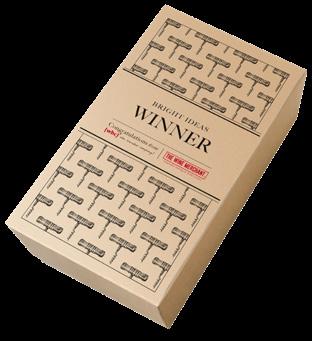
Tell us about a bright idea that’s worked for you and you too could win a prize.
Email claire@winemerchantmag.com
THE WINE MERCHANT july 2023 13
br i g h t i d eas
Favourite Things
Americans poach
Gusbourne boss
Jackson Family Wines has announced plans to begin producing English still and sparkling wine after hiring Gusbourne CEO Charlie Holland.

The California-based company, whose flagship brand is Kendall-Jackson, will initially produce vintage and non-vintage sparkling wine at a contract winemaking facility called Defined Wine in Kent.
Kris Cattaneo Jorvine, York
Favourite wine on my list
I am really enjoying the De Loach Heritage Collection Chardonnay from Sonoma. This wine is wonderfully fresh and crisp on the palate, with interesting Burgundian similarities.
Favourite wine and food match
The perfect dish to go with this wine is a butter chicken curry to balance out the flavours.
Favourite wine trip
My trips to Chile and Argentina in 2019 and 2022 were fantastic, mainly due to my love of Carménère and Malbec. I visited the Emiliana vineyard in Chile and was able to see first-hand how they grow biodynamic and organic grapes, which was fascinating. Another highlight of the two trips was meeting the great Walter Bressia, who is one of the five pioneers that make Malbec what it is today in Argentina.
Favourite wine trade person
Jancis Robinson MW is a great wine critic and once gave very sound advice to the Queen on her wine cellar. If she’s good enough for our late Majesty, then she’s good enough for us!
Favourite wine shop
We Love Wine in Brompton, North Yorkshire. They stock some fantastic wines, by the bottle and by the glass. The staff are always happy to help and take the time to advise customers.
Magpie

During her tenure at Lay & Wheeler, Keating oversaw a major reset of the business, which took it back into profit, seeing a “transformational” year in 2020, when sales rose by 57% to £7m. The Drinks Business, June 8
It is also in the process of acquiring around 26ha in the Crouch Valley in Essex.
It will begin planting Chardonnay and Pinot Noir vines there, with plans to produce still and sparkling wines. Decanter, June 28
Free rosé wine, from a billboard
Aldi set up a billboard dispensing free rosé in Manchester ahead of National Rosé Day on June 10.
According to sales data from the retailer, the north west has been identified as the UK’s biggest rosé-loving region so shoppers in St Ann’s Square were able to help themselves to a glass of rosé at a designated time.
Research by the supermarket chain also found that rosé drinkers enjoy an average of 63 glasses throughout the summer months, spending £11.34 a bottle. Wales Online, June 9
Italy recruits a star of Champagne
Katy takes charge at Flint Wines
Flint Wines has appointed the outgoing Lay & Wheeler boss, Katy Keating, as its new managing director.
Keating will be responsible for the overall operations and strategic direction of Flint Wines as well as its private customer arm, Stannary Wine.
Award-winning chef de caves Cyril Brun is leaving Champagne Charles Heidsieck to replace the retiring Ruben Larentis at Italian sparkling wine producer Ferrari Trento.
The Italian company claimed that it is the first time a chef de caves has ever left Champagne to join an Italian winery as a full-time oenologist.
Brun won several winemaker of the year awards during his eight-year tenure at Heidsieck and he drew acclaim for his work on the Champagne Charlie cuvée. Decanter, June 16

BITS & BOBS
THE WINE MERCHANT july 2023 14
Charlie Holland
Urbanites snap up Sussex vineyard
London Cru, the urban winery owned by Cliff Roberson, has purchased Foxhole Vineyard in West Sussex.
Alex Hurley, the winemaker at London Cru, said: “Foxhole Vineyard marks London Cru’s ambitious project to increase the quality and styles of still wines being made in the UK by taking advantage of controlling every stage of production with this purpose.”
London Cru did not disclose the purchase price for the vineyard, but the 12ha property was listed with a guide price of £690k.
Decanter, June 28
Burgundy museum project is complete
A project to build three regional wine museum complexes in Burgundy has completed with the opening of the site in Beaune, which followed the launch of the smaller sites in Chablis and Mâcon a month earlier.
The Cité project has many estate backers including Domaines Albert Bichot, Leflaive and Romanée-Conti. Each interactive museum has bars, a gift and book shop, function rooms and the facilities of the Bourgogne wine school.
Wine Searcher, June 15




What do you think is the most under-rated grape variety?
�Generally anonymously buried within the southern Rhône or regional Languedoc labels, Grenache, including its blanc guise, epitomises so much about modern-day consumer tastes. It produces bright, fresh whites bursting with zesty fruits, while the reds offer luscious berryladen wines underpinned by the much-loved soft and silky textured mouth feel. Surely it is time to see this too often hidden variety take more richly deserved limelight.”
Jon Horton

Addison Wines, Shropshire
�Frappato is a hugely under-rated grape variety. It’s one of the indigenous Italian varieties, planted mostly in Sicily. Frappato wines are light, very aromatic, fruity and refreshing. They can be served slightly chilled for summer drinking, proving a great alternative to Pinot Noir. The Frappato in our range is produced by Mandrarossa, a fresh and light wine that captivates with its marked fruity black cherry and pomegranate aromas.”
Zuzanna Sarvasova
The Crafty Vintner, Belfast
�Tannat is my favourite under-rated grape. It’s originally from south west France, and is high in tannins, with red berry flavours. Ageing in oak reduces these tannins somewhat and adds cedar and chocolate notes. It has one of the highest levels of antioxidants amongst red wines and, coupled with high tannin and acidity, has good ageing potential. It’s been adopted by Uruguay and now several US states, and could well be the next big discovery of the wine world.”
Ian Rayson

Corkscrew Jersey, St Helier
�Aligoté, often outshone by Burgundy’s other white grape, Chardonnay, is an incredibly underestimated white. It’s often used to make kir, the local specialty of white wine mixed with crème de cassis blackcurrant liqueur, but absolutely deserves to be drunk and enjoyed on its own. It has fabulous aromas of light stone fruits, blossom, green apple and pear, citrus and even hazelnut, with mouthwatering acidity and minerality.”
Champagne Gosset
The oldest wine house in Champagne: Äy 1584
 Kasia Smith H Champagne winner H Finley’s Wine Shop & Bar, Hoxton, London
Kasia Smith H Champagne winner H Finley’s Wine Shop & Bar, Hoxton, London
? THE BURNING
THE WINE MERCHANT july 2023 15
QUESTION
Cliff Roberson
WIN A TRIP TO ARGENTINA
Bodega Argento and Bodega Otronia are inviting independent retailers, no matter what their size, to run a special promotion between September and October.
Five lucky winners will travel to Argentina to visit the beautiful organic vineyards of Argento in and around Mendoza, before flying more than 1,000 miles to explore some of the most southerly vineyards on the planet in Chubút, located in extreme Patagonia.




Bodega Argento is Argentina’s leading organic wine producer. It owns 1,102 hectares across five vineyard sites in top Mendoza districts, of which 452.5ha are planted. Bodega Argento produces pure, elegant fruit-driven wines that embody the essence of modern Argentina. Its range of organic single vineyard wines from Alto Agrelo, Altamira and Gualtallary are true expressions of its terroir.
Imported
by
Walker & Wodehouse
Bodega Otronia makes wine at the edge of the impossible in Argentina’s extreme Patagonia. Located in Chubút, 2,000km south of Mendoza, its organic vineyards are some of the southernmost in the world. 50 hectares are planted with Chardonnay, Pinot Gris, Gewürztraminer, Torrontés, Riesling, Merlot and Malbec. Bodega Otronia’s wines are elegant and powerful expressions of their natural environment.
CRITERIA
To win a place on the trip, you must commit to arranging a three- to six-week promotion in-store and online. The promotion must include three wines from Bodega Argento and three wines from Bodega Otronia. It can run anytime from September 15 until the end of October 2023. Judges will be looking to reward the most effective promotions.
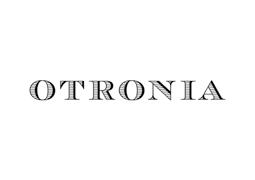
APPLY NOW
Email charlotte@winemerchantmag.com to register your interest. Entries will remain open until September 1. Orders can be placed from September 1 for delivery by September 15. Please note that Bodega Argento stock should be ordered from Walker & Wodehouse while Bodega Otronia stock should be ordered from Liberty Wines. Lucky winners will be announced in November 2023 and will head out to Argentina for a seven-day allexpenses-paid trip in March 2024.
 Imported by Liberty Wines
Imported by Liberty Wines
GRAHAM HOLTER Editorial
Why do we put our wine education on pause? I blame the trains … well, a bit

Iwent to a masterclass at a tasting in London a couple of weeks ago. This was unusual for me. I don’t normally sign up for masterclasses. Come to think of it, I don’t go to many tastings these days, either. Certainly far fewer than I used to.
Trains are part of the problem. In the past month or so, I’ve found myself stranded in Hereford at 10pm, and at Clapham Junction after the London Wine Fair when all trains heading south, and hence home, were cancelled. In both instances – and these are just extreme examples of a hundred rail-related sob stories I could dredge up – I ended up inconvenienced, irritable and out of pocket. The £300 fare I paid a black cab driver to get me to East Sussex was apparently the biggest of his career.
Back to my London masterclass. I took my seat, expecting to find my mind wandering before we’d reached the second or third wine in the slightly daunting flight in front of me. But the wines were interesting, as were the people presenting them. I found myself listening. I found myself learning. It was time well spent.
What happens to us, once we’ve climbed as far up the WSET ladder as we’re prepared to venture? Do we keep our wine knowledge topped up? Do we make a genuine effort to expand and update it? Or do we spend the rest of our working lives basically confirming everything we think we understand about Chablis climats and malolactic fermentation?
I know one perfectly good wine merchant who declines all invitations to trips and tasting events. Her rationale goes like this. She’s had a long career in the wine business and has travelled widely. She’s
bought and sold so many wines that she's confident she has a detailed knowledge of the entire vinous universe. Her view is that if she never tries a new wine again, she still has more than enough options in her memory bank to keep her shop amply stocked with a compelling selection.
At the recent event in London, I bumped into another independent merchant, who I see at pretty much every tasting I attend. She had wanted to join the masterclass, but no places were left, so she was keeping busy in the walk-around tasting.
“Why aren’t there more independents here?” she asked, looking incredulous. I’d spotted just four, including her. I remarked that most indies – and indeed journalists – perhaps aren’t as diligent about these things as she clearly is.


“But it’s how you learn,” she said. “It’s how you keep things fresh. There might be something new happening I didn’t know about. I don’t want to miss anything.”

She’s right. So I think I’m going to try harder. The railways are unlikely to get more reliable, but maybe I can use those wasted hours on train platforms reading about qvevri, or boning up on the new Unità Geografiche Aggiuntive classification in Chianti Classico.


CINNAMON ESPRESSO MARTINI
Various sources have recently claimed the Porn Star Martini, Strawberry Daiquiri and the Margarita as the nation’s favourite cocktail, but possibly the most phenomenal rise through the ranks has come from the Espresso Martini, which has gone from “what, coffee in a cocktail?” status to shoo-in on most high street menus. Maybe it’s time for a reinvention, such as this spicy twist from online retailer The Bottle Club.
6cl Monin cinnamon syrup

6cl vodka

6cl espresso coffee
1-2 tablespoons of cinnamon sugar
Cinnamon sticks
Coffee beans
Pour about half of the cinnamon syrup on to a plate and cover with the cinnamon sugar. Rub the rim of a Martini glass over the mixture. Combine the vodka, coffee and remaining syrup in a shaker and shake vigorously. Strain into the glass and garnish with a cinnamon stick and some coffee beans.

A château in vineyards near Sopot, Plovdiv Province, Bulgaria
THE WINE MERCHANT july 2023 17
Stars of Setúbal

3. Fernão Pires
Fernão Pires is one of Portugal’s most popular grape varieties, and it’s right at home in the Setúbal Peninsula. It thrives in warm climates and fertile soils, can withstand frost, and produces healthy yields – so from a viticultural point of view, it’s already ticking a number of boxes.

The region’s winemakers appreciate these qualities, but they also love Fernão Pires for other reasons. Its aromatic qualities add to its appeal – it’s typical to find notes of tangerine and citrus, or perhaps more floral aromas, especially roses. Some wines made with the variety have a more exotic character, suggesting spice and tropical fruit.

Fernão Pires typically produces a fresh and zippy style of wine that’s usually enjoyed while it’s young. But skilled winemakers can add extra layers of complexity, sometimes by blending in a small proportion of other varieties. We tried some examples from the Setúbal Peninsula whose producers did exactly that: these are our favourites.
Adega de Pegões
Fontanário de Pegões Branco 2021
Hallgarten & Novum Wines RRP £10.99
Here, Fernão Pires is joined by Arinto, a variety prized for its acidity, vibrancy and mineral character which makes up 10% of the blend. It’s a tried and tested partnership, and one in which this cooperative of 90 winegrowers in the Pegões pliocene terroir clearly has confidence.
The soil in the Pegões vineyard, situated between two nature reserves, is ancient and sandy, and the heat is moderated by cool Atlantic winds.
A light maceration is followed by fermentation in stainless steel, with chief winemaker Jaime Quendera at pains to preserve natural aromatics.
What emerges is a rich, fleshy wine, at just 12.5% abv, with tropical notes, a gentle spiciness and a satisfying mineral tang on the finish.

Sometimes the most enjoyable Fernão Pires wines are the most easygoing. This one is guaranteed to bring some Portuguese sunshine, wherever it’s being consumed.
Bacalhôa
Catarina Branco 2021
Ehrmanns RRP: £10.99
Arinto again plays a supporting role in this Fernão Pires-led blend, but this time there’s a third variety in the mix: Chardonnay. It comes from limestone slopes on the Arrabida mountains, and maybe the faint chalkiness in the wine’s texture owes something to this terroir.
The Chardonnay also differs from the other two varieties in that it’s fermented in new French oak, which doesn't add any vanilla notes but does seem to bring complexity and depth. There’s a pleasant warmth and nutty character on the finish that gives an extra layer to the steely freshness of Fernão Pires and Arinto.
At 14% abv, it’s a wine that needs to be savoured rather than swigged, and it has the sort of structure that encourages a bit of pausing for thought.
Yet it’s still a Fernão Pires wine at heart, designed to be enjoyed in its youth, with a cool, quenching minerality.
THE WINE MERCHANT july 2023 18
In association with Setúbal Peninsula Wines
Robert Manners
Feature sponsored by Jeroboams Trade
For more information about the company, visit jeroboamstrade.co.uk
On the Road
Robert is jeroboams trade’s partnerships DIRECTOR, working with a growing number of independent merchants across the UK
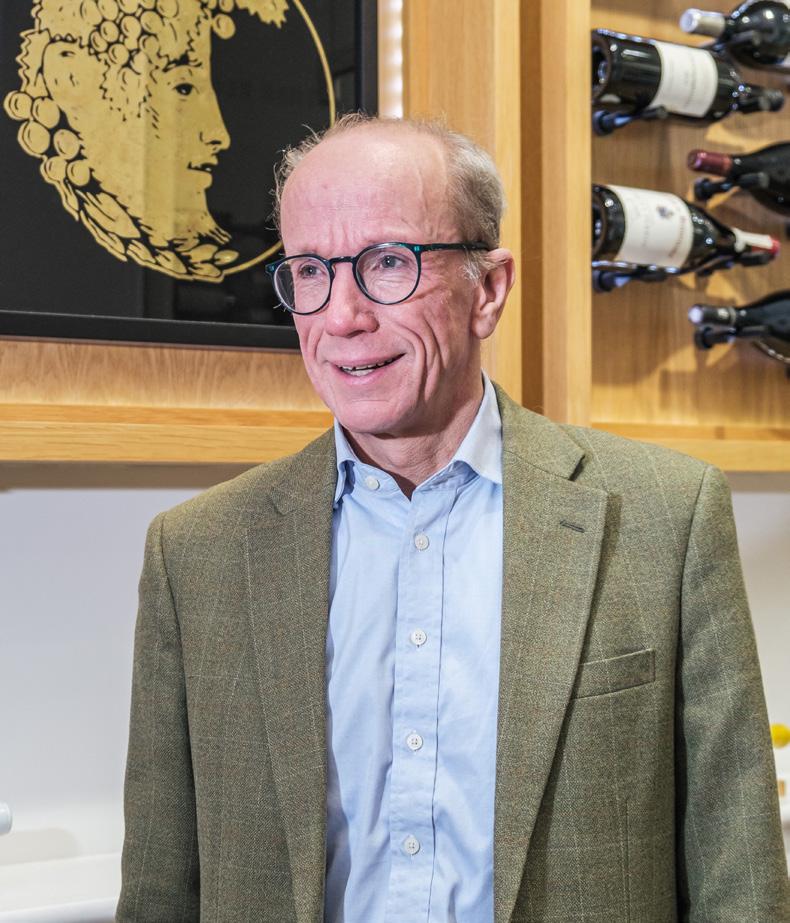
I started working for a negociant in Bordeaux in the early 1980s. I went on to work at Berry Bros and I spent a lot of my formative and latter years working on the retail side, corporate sales and more commercial partnerships, dealing mostly with airlines. Since joining Jeroboams I’ve extended into the independent sector.
Airlines and the indies are very different beasts. But equally satisfying when it all goes right. The independents at any one time can be looking for that entrylevel wine as well as Super Tuscans to have on the shelf for those more discerning customers. Airlines tend to want to have wines which anybody with any modicum of wine knowledge will respect and think represents value for their plane ticket. We have to work well in advance with the airlines whereas the independent sector is more immediate. If they like it, they’ll have a delivery tomorrow rather than in nine months’ time.
A wine tasting with cabin crew can be a bit of a dry old do. It’s important that they get to know when there’s a new selection
on board, but they’re not allowed to drink alcohol before they fly. So I can talk them through the wines and if I know the menus I can discuss the wines in those terms. It’s the only time in my career that I do a tasting and leave the corks in the bottles. It’s very different to a tasting with an indie.
We’re really excited about an Argentinian agency we’ve just taken on. Achaval-Ferrer in Mendoza has a range of single-finca Malbecs that just taste fantastic. The other agency that we’re very excited about is Kaesler, from Australia. Their top wine is called Old Bastard, which always catches attention!

Also new to the portfolio is Fram from South Africa. Their wines have intensity of flavour and fruit but a lot of elegance about them, and they are really quite affordable.


I am very excited by English wine. I think we are on the cusp with even bigger and greater things coming our way. They punch well above their weight and perform very well in blind tastings, quite often beating some of the Champagnes.
When you’re selling it, it’s a very exciting proposition. Virgin Atlantic have just listed their first English wine across their global fleet. It’s a Bacchus from Yotes Court called On the Nod.
The owner, Susannah Ricci, has a horseracing background so all the wines are named with a racing term.
It’s a very exciting leap because I don’t think
Virgin would have looked at it five years ago, but this wine is a real contender in the market. It tastes fabulous. Some people don’t know what Bacchus is, but they’ll soon find out.
I was once called out to a client by a butler because the air conditioning had gone in the cellar. It was completely broken and was blowing hot rather than cold. I was paddling around in vintage Cognac and vintage Champagne – some of the best wines you’ll ever come across. The corks on about 30% of them had popped and the contents spilled all over the floor. My shoe leather has never smelt so delicious in all my life.
If I didn’t work in wine, I would have liked to have been a professional sailor. I’d love to have been on a racing yacht. I don’t have a fast yacht to go and play with but I have had a little dinghy in the past, which I’ve trailed down to Cornwall and annoyed everybody behind me on the A303.
I keep bees, but they’re not in my garden. They were, but they stung my wife too many times and she said, “it’s me or the bees”. So I have a couple of hives on a farm. They are fascinating little insects and when they deliver honey, it’s even better. The whole rigmarole of catching a swarm and then putting it in the hives is always very exciting.

THE WINE MERCHANT july 2023 19
Call 020 7288 8888
One of the disadvantages of living northabout in Orkney is the cost of going anywhere else. A return flight to Edinburgh is around £250 at the moment and London twice that. Cheap flights to wine-producing areas aren’t so cheap when you add in those initial costs. You can’t argue with geography.
That – and a little annoyance called Covid – meant that, until last week, it was well over three years since I’d visited a winery.

Thanks to the good folk at Boutinot, that dearth ended with an excellent trip across northern Spain from Rioja Alta to Montserrat. Rather than turning this column into a whistlestop “what I did on my holidays” (because, as everyone stuck back in the shop tells me, I’ve been on a lovely holiday) I’ll focus on an extra visit I
tacked on at the end. This one was across the border in Languedoc, and constituted one of the most extraordinary geology lessons I’ve had in my life.
Le Clos du Serres is situated on the edge of the village of Saint-Jean-de-la Blaquière, which is itself on the southern edge of the Cévennes mountains. The land descends in a series of irregular slopes, valleys and terraces, hence the name of the appellation: Terrasses du Larzac.
Up on the limestone plateau of Larzac a few kilometres north, Roquefort cheese is made – the oldest appellation d’origine contrôlée in the country, dating back to 1925. By contrast, Terrasses du Larzac wine only gained such recognition in 2005. Even now, it only covers red wine, despite some distinctive whites being made there.
The domaine is small, about 15 hectares, and Béatrice and Sébastien Fillon do just about everything, with a little help for certain jobs. It was Béatrice who showed me around, with great enthusiasm and an undiluted passion for the soil beneath her feet. To be honest, there was precious little soil to be seen. What there was lots of was rocks of different varieties.
The area is a jigsaw of different stony soils. I’ve never seen such variety in such a small area: limestone has crumbled and washed down from the Larzac plateau; stumps of volcanoes testify to the source of igneous seams; long-gone waterways have deposited swathes of galets roulés; easysplitting schist is used to build walls and capitelles (circular sheds in the vineyards) and has also disintegrated into flaky, friable, almost-soil.
Aschist vineyard called Les Maros was the source of my favourite wine. The roots of the Grenache “plunge down” (as Beatrice said several times) seven or eight metres in search of moisture, gathering in tremendous minerality as they do so. The wine is remarkably fresh as well as almost liqueurishly-ripe.
The Sainte-Pauline and Saint-Jean vineyards, in which they grow Syrah, Cinsault and Carignan, are strewn with those galets roulés; not much wonder the wines are reminiscent of Châteauneuf-duPape.

The most striking soil, visually, was the iron-oxide sandstone called ruffe, around the Saut du Poisson vineyard. Beatrice claimed the soil here was unique in France: it had no organic matter in it, and consisted entirely of pulverised fossils. It’s red as the surface of Mars, and nearly as dry. This is where they grow their Grenache Blanc for the excellent Saut du Poisson white.
“So where do the fish jump?” I asked, looking around for a river.
“Fish haven’t jumped here for millions of years,” she said. It’s a blague: this is the driest part of the domaine.
You can’t argue with geology.
THE WINE MERCHANT july 2023 20 DUNCAN
MCLEAN Northabout
My first vineyard visit in more than three years felt a bit like a trip to Mars
Duncan McLean is proprietor of Kirkness & Gorie, Kirkwall
Old Grenache vines at Les Maros

Merchant Profile: Chesters, Abergavenny
‘I just want to bring my dog to work’
It all started with an ultimatum from Majestic, issued to trainee manager Lloyd Beedell.
“I had quickly got fed up driving the van, and selling £6, £7 bottles of Pinot Grigio and Sauvignon Blanc,” he recalls. “So I started my own little wine pop-up tasting called Wineways Cardiff. It would be in a different restaurant, different café, different bookshop, trying to introduce people to fun wines that I love drinking.”
Some of those wines came from Majestic. But plenty didn’t.
“From my time in restaurants, I knew all the reps and I knew some winemakers,” Beedell says. “We used to have guest speakers and we had guest winemakers. This was happening all over Cardiff, and we were quickly selling 30, 40 tickets a night, once a month, drinking lots of great wines in cool venues.”
Perhaps not surprisingly, “Majestic had a bit of a problem with that”.
Lloyd Beedell has quite simple priorities in life, and they mostly centre on good wine, playing his favourite LPs and spending quality time with a German shorthaired pointer who keeps a watchful eye on the comings and goings at his shop.
Chesters has embedded itself into the Abergavenny community, with a loyal customer base which has gradually come to understand why some wines make the list, and others certainly don’t.
Beedell explains: “I got a call from the head office in Watford and had a meeting with my area manager. He said, ‘Well, you know, it’s very entrepreneurial, it looks great, but you can’t do both. So you drive home to Cardiff and by the time you get there, I want a decision on whether you want to stay with Majestic, but if you do, you have to stop the Wineways Cardiff thing.’ I drove back to Cardiff, and I handed in my fleece.”
Three months later, Chesters opened in Abergavenny, originally in a smaller unit than the delightful old building it now occupies in the centre of the South Wales town. The German pointer from whom the business takes its name appreciates the walled garden at the rear – and so do customers, who have come to expect an eclectic range of wines and music, and know not to ask for Pinot Grigio.
What was the original shop like?
It was an old stables, so we had a little retail space downstairs. It wasn’t actually much less wine, in the old shop. But it was like a shoebox.
By Graham Holter
You could fit a desk at the bottom, Chester’s bed under the stairs, one big wall of wine and a little mezzanine upstairs, where I could sit about 10 people for wines by the glass. It was mainly retail focused.
I ordered far too much wine all the time: I was either playing Tetris or selling wine. We just outgrew the space, really.
Covid hit and it was a busy time for us. For the first three or four weeks, everybody got behind
THE WINE MERCHANT july 2023 22
supporting local shops, so we were shifting wine like it was Christmas. It was great. Then it slowed down a bit, and like everybody else we had to pivot. So I looked at it and thought: when this is over, are we going to survive with just retail? Not sure. So we had a chance to look at this property down here, with the garden. I thought yeah, let’s go for a bit of on-trade and retail and see how we go.
This feels like it was almost purpose-built to be a wine shop and bar. It looks great. Yeah, it didn’t look like this when we took it over, it was very grey. All the walls were covered in the most amazing units you’ve ever seen, which we ripped down, and I made a right mess doing. All the beams were painted, so we had to blast them off. Obviously I didn’t want to spend much money, so I got some real cowboys to do that, which delayed us opening for two weeks. They sandblasted without any extractors and just left it, so that was a bit of a pain.
The building itself was a Peter Dominic wine merchants many years ago. It’s quite nice to go full circle back to it.
What made you think Abergavenny needed a wine shop in the first place?
Well, we were based in Cardiff, and there’s obviously a couple of good little indies down there. I looked at Abergavenny; I didn’t know the area that well, but I knew of the food festival and its reputation as a foodie town. If you’re a very foodie town without a wine shop, there’s obviously a little gap in the market. There are a couple of independent shops that do a little bit of wine but they’re not actually experts in it. So we opened and built a community around the shop. And it’s been a part of Abergavenny ever since, really.
How big is the population?
Roughly 9,000, as a town.
As small as that? Is there a big hinterland to tap into?

Yes and no. A lot of the surrounding towns in Monmouthshire, blue [voting] towns, probably buy a lot of wine from Tanners. But the town is growing massively. Since you don’t have to pay to cross the [Severn] bridge anymore, and because of Covid, there’s definitely a lot more younger people that have moved here from the Bristol area. So the demographic is changing in the town.
When we first opened, we were definitely too young and cool for Abergavenny – and trying too hard to be young and cool. There aren’t enough other people that want to drink those kinds of wines. So we’ve kind of found the middle level now, doing lots of stuff that we really love and want to do, as well as keeping the town happy, which I know is a weird thing to say. We couldn’t just sell lots of lowintervention, orange wines. It wouldn’t work here.
There are much bigger places than this that wouldn’t support a specialist wine merchant. I think we’re quite lucky here, actually, because we are quite isolated. It’s beautiful; it’s on the foot of the Beacons. But there’s nowhere else to go. The closest town is actually Crickhowell village outside Brecon and even Brecon is half an hour away. Monmouth’s half an hour away. So once you’re here, you’re kind of here, and the community is quite a strong community.
THE WINE MERCHANT july 2023 23
“ When we first opened, we were definitely too young and cool for Abergavenny – and trying too hard to be young and cool”
Lloyd Beedell (and Chester), Abergavenny, May 2023
Do you have most of the obvious boxes ticked with the range, or do you wilfully do your own thing?
I think we’ve sort of wilfully tried to do our own thing, and not conform. Like, we still sell more Austrian Grüner Veltliner than we do New Zealand Sauvignon Blanc. I can’t remember the last time we sold a bottle of Pinot Grigio.
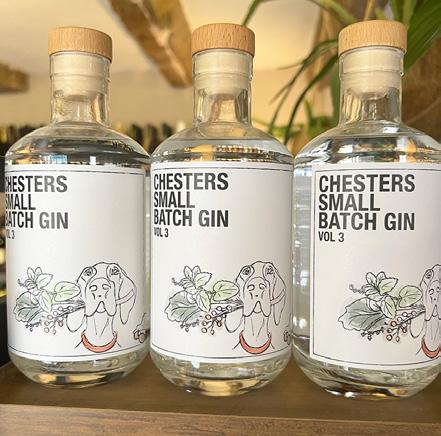
Do people ask for it, though?
Not anymore. I suppose we’ve influenced people’s tastes.
From day one we only stocked grower Champagne, which for a year probably hindered our Champagne sales. But now people get it. There are a few producers I’ve given up on for sure, just because obviously everybody wants their wines, so they’ve become allocation-only mythical beasts that you can no longer get – or you can get six bottles, and I’d probably want to drink all six. Long gone are the days of selling lots of Agrapart and things, because the price has gone through the roof and they’re just no longer really available to us. But new young growers go on the shelf, for the right money.
Do you do any wholesaling?
We’ve started. Not huge amounts; we’ve never really gone after it. That’s part of the plan for next year. But it’s something that’s grown organically with local restaurants. It’s really hard, actually, to find people that want to put decent wine on the list. Just outside of town, we’ve got four or five really, really good gastro pubs and restaurants that have opened in the last few years, who actually care about food and where it comes from. So the wine list has to match that. It’s too easy to just write a list full of recognisable wines. We’ve slowly started to have influence, I think, on the local wine scene.
How do you think your customers are discovering new things?
I say everybody who works in the wine trade’s job is to introduce new wines to people. It’s too easy to go and drink the same bottle of wine every time. We have wines on by the glass here, which we change every week, so that’s a good way of getting people to try different things. I encourage the guys here to taste wines all the time. So I suppose people are buying what we’re drinking.
How many wines are on pour at any one time?
We do three reds, three whites, a rosé and bubbles. And then we do the sort of icon wine list by the Coravin alongside that, which enables us to open some slightly more expensive and delicious wines. We pick them really by what the guys want to taste and learn about.

Do you have a good relationship with your reps and suppliers generally?
We used to work with far more companies. I’ve cut it down over the last six years or so. The core people we buy off do come and see us and are quite forthcoming. We are hard to get to, so if I need something they’re more than willing to send some samples, which we normally pay for anyway. We’ve got quite good a relationship with our reps. Our core suppliers are Carte Blanche; Ben [Llewelyn] is a friend and a bit of a mentor and only lives down the road. Flint Wines; we do quite a lot with Thorman Hunt and Savage Selection. We’re starting to do a little bit more with people like Indigo. Swig are quite big for us. Then there are people like Liberty and Hallgarten in the background too.
What kinds of wines are floating your boat at the moment?
I’ve always drunk lots of lower-intervention red wines from Beaujolais and the Loire. I really like
THE WINE MERCHANT july 2023 24
“I say everybody who works in the wine trade’s job is to introduce new wines to people. It’s too easy to go and drink the same bottle of wine every time”
the Loire Valley at the moment. Cabernet Franc is such good value. There are some really, really smart wines there; the Chenin as well. Coming into this time of year I’ll be drinking lots of Gamay and zippy, fresh reds.
We started off to try and not be old-world heavy but very quickly came back to my Francophile roots. France and Spain kind of became what we’re about, really. Argentinian Grenache that’s not massively extracted … I’ve got a bit of a penchant for that at the moment as well.
Do you find it easy to find new stuff to keep refreshing your list?
Ben from Carte Blanche has got some incredible agencies on his list, and we taste a lot of wines that are not on his list. We’re often over in France and Spain together. I do try and get over as much as I can.
I’ve just got back from South Africa, which was fun. My other half is South African, but South Africa, especially Swartland, has always been a big part of Chesters, even before I met Karla. We do a festival every year called Abraiigavenny, which is just focused on South African wines. We get the barbecues going and have some fun.
Does direct importing appeal at all?
We’ve done a little bit. I’d like to do more. But at the moment, it’s hard to see the value with the sheer volume you need to bring in.
Have you got storage space for the wines you buy as it is?
Any space that you can see! Actually, we’ve got a little storage room upstairs, which has become just a sort of dumping ground for all sorts. It’s full of bikes and lots of nonsense.
You recently bought out your original business partner, Ben Southon.
Maybe as the business evolved, we grew apart. I’m looking forward to the next chapter.
We’ve got a good team here, seven people. Joe will be my full-time part-timer, and then we’ve got our merry band of weekend workers. Some of them are customers that just started turning up to work on the weekend. Which is quite fun, actually.

They’re all good as gold. They’ve all gone through their Level 2; some of them want to do Level 3 this year.

THE WINE MERCHANT july 2023 25
The shop is in the town centre, with a secluded garden space
Customers receive emailed information about special offers, but Beedell prefers to welcome them in the shop rather than sell them a monthly case via the website
How much difference has it made, having a garden?
That was the whole reason for moving down here, to be honest. Just having that massive space for ontrade. When the sun finally shines, which it doesn’t often in Wales, that can make a massive difference. We can fit 40, 50 people out there. We do lots of events out there. We do some small plates as well, which goes well.
How do you organise the food?
We do all the prep here, all of us. No chiefs here, all Indians: everyone takes turns in the kitchen. We don’t cook anything, we just buy good local, high-quality ingredients and plate them in a way that looks decent and tastes great. I love food, I love cooking.
We change it all the time. It’s just dishes picked up from our travels around the wine world, really.

I’m off to Greece next week – I’m sure when I come back, there will be something Greek-inspired on the menu.
I can still remember going to La Buvette in Paris and having burrata with lemon and oil, and now that’s a staple of our menu. We do steal ideas.
Tell us about the vinyl.
Music is big part of what we do. We tried to take the deck out a few months ago and people were kicking off: “Where’s the vinyl?” All we play all night is vinyl records, which is really nice.
We used to sell vinyl too and there’s still a little bit left on the floor. I do kind of dump a lot of my stuff there. I’m being told to clear out at home. But I was spending far too long browsing through record catalogues as opposed to wine catalogues.
Do you do a case of the month or anything like that?
We don’t really do a case of the month because I like people coming into the store. We’ve got a pretty active mailing list, with about 1,200 people on it, but we haven’t got anything online yet. We will launch a website very soon. I just need to pull
THE WINE MERCHANT july 2023 26
my finger out and spend two weeks stuck in a cave somewhere to finish it. But it’s not far off.
We sell through our mailing list and we do offers or just little producer profiles. Sometimes it works really well. Like, a couple of weeks ago, we sold a pile of dusty Bordeaux: 240 bottles of wine went in a day or two. And then on other days you send it out, it’s a really lovely wine that you adore, and you might only sell four or five bottles.
What kind of events do you hold here?
We always have a tasting on the last Thursday of every month, which is fully attended. The tickets go within 24 hours, 48 hours. We try and keep it around £20, £25. Sometimes we do food as well so that would drive the prices up. If we’re doing expensive iconic wines, then the price goes up. We sometimes have guest chefs to do food things as well. We’ve done some epic nights where we’ve had a Michelin-star chef and turned it into a fine-dining restaurant.


We set them up with an outdoor kitchen, cook over the fire pit and on induction hobs. We’ve done five-course tasting menus for 14 people
We probably lose money, but it’s fun. Sometimes you’ve got to do these things, otherwise it gets a bit boring.
We’re planning a big wine fair and a food festival this year actually. We’re calling it Feast, and it is going to be a feast. We’ve got a really good chef cooking. Its theme is sort of sea, forest, farm … wine. It’s about celebrating local people.
What would you like to do next? Have you got a five-year plan?
Five-year plans are no good for me. My brain doesn’t work that far ahead. Let’s survive the next year, and kick on with the website launch.
We’ll start doing a little bit more wholesale if it’s right for us. And I would quite like to open shop two. I don’t know where that is – I’m not sure if it needs to be closer to here just to split the stock, or we look at developing one of the guys here and opening somewhere further afield.
It sounds like you’re happy with how things are going.
Yeah, I just want to bring my dog to work and sell wine and listen to music all day. So it’s great. I do love it. I’m not getting rich by any means. But I’m happy, which a lot of people are not.

“We used to sell vinyl as well, but I was spending far too long browsing through record catalogues as opposed to wine catalogues”
THE WINE MERCHANT july 2023 27
campiones of campania
The Mastroberardino family has been at the centre of the Italian region’s winemaking for centuries. Under the Terredora banner, it makes wines that age spectacularly, both red and white
Is there a more thrilling city in Italy than Naples? Is there a more exciting wine region than Campania? These are questions that spring up during an entertaining lunch in the company of Daniela Mastroberardino.
The name is probably familiar. The Mastroberardino family is synonymous with Taurasi, an appellation which it elevated to international superstar status in the 80s and 90s. Then came a parting of the ways, with Walter Mastroberardino taking ownership of the family’s substantial vineyard holdings in 1993 and setting up Terredora, while his brother retained the winery and opted to make wines with outsourced fruit.
It’s all water under the bridge now, and Terredora has capitalised on its status as Campania’s largest vineyard owner (it has 180ha of vines) with a thrilling line-up of wines that have raised expectations of what the region can achieve.
Our London tasting, attended by a group of independent wine merchants and restaurateurs, gives us the chance to assess how Fiano di Avellino twists and turns with age, and how the tannins of Taurasi – “the thinking man’s Barolo” – can be tamed.

Winetraders MD Michael Palij MW has “loved this part of Italy ever since my first visit there 25 years ago,” he says . “One of the first questions I asked was, ‘what is the date of the harvest?’ And Daniela said, ‘well, normally in the middle of October’. What struck me about that was, here we are in the hinterland of Naples, in one of the warmest parts of the grape-growing world, and they’re harvesting their white grapes a month after Bordeaux.
“That set me thinking about what it is about Italian grape varieties that gives them this amazing ability to hang on the vine, to pick up more and more flavour precursors, and to develop that
potential to age. And why don’t we ever taste older samples?”
We start with Fiano di Avellino DOCG Ex Cinere Resurgo. The 2022 wine, bottled in late February, is bright and lively, with flashes of apple and citrus and a salty tang. The 2021 is already a different beast, with a distinctive stony minerality. Fruit for this label comes from two vineyards, each with its own character, and the proportions can vary from year to year. But what we’re tasting isn’t a vintage variation: it’s simply what happens when you allow the wine to evolve in the bottle.
“Fiano is considered the outstanding grape of the region for white wines, and one of the best in Italy,” says Daniela. “It’s very elegant and capable of great ageing.
“We can compete with the most important white wines of the world, like Chablis, like German Riesling. We don’t want to give the impression that Campania is just a typical Mediterranean white wine region. We can produce something that can really compete with the best in the world.”
We move on to Fiano di Avellino Riserva DOCG CampoRe, from 2018 and 2012.
“Until the mid 80s, the [Fiano] wines were always aged in wood,” says Daniela. “After the steel-tank revolution, people started to release their Fiano in the spring following the harvest. It changed the style that we offered to the consumer, and what the consumer demanded, so we were losing a great heritage.”
After experimenting with a combination of stainless steel and barrique, the decision was taken to ferment only in used oak from 2003, allowing the wine to settle for six months before bottling.
Terredora was embracing tradition, but the idea wasn’t to add vanilla notes or extra structure. It was simply to allow a faint creaminess to emerge, balancing the trademark acidity that makes the wine so ageable.

THE WINE MERCHANT july 2023 28
Published in association with winetraders (uk) 01993 882440 winetradersuk. co.uk
“You wouldn’t recognise this as a wine from southern Italy were it not for its incredible acidity,” Daniela says.

Jason Millar of Theatre of Wine in London picks up on the “nutty, smoky, oily” character. “I really like the riservas because they don’t have a lot of butter and vanilla and that very creamy texture,” he says. “There’s earthiness, there’s spiciness and, in the case of the 2012, a very firm, mineral feel to the finish.”
Jason observes that the younger Fiano wines are tight and focused, but as they age they start to uncoil, in the same way as a great Riesling, and to explore new avenues of complexity.


Daniela says: “If we are talking about an international style of fresh, drinkable wine, you can drink Falanghina. If you want something more serious, you can choose an older Fiano.”

Taurasi is based on Aglianico, a grape described by Michael as “the lovechild of Nebbiolo and Mourvédre”. It’s synonymous with alcohol, acidity, concentration and tannins. Although the DOCG allows some blending with other varieties, Terredora prefers not to go this route, and to age in barrel, and in bottle, for much longer than legally required.

Winetraders brings in the acclaimed Fatica Contadina range but Michael is also keen for us to taste the Pago dei Fusi – “the wine that got all the Parker points”. He explains: “It’s seen the most new oak, it’s got the lowest vineyards; it’s the easiest to appreciate.”
We sample the 2007, 2008, 2009 and 2013 wines, which are soft and elegant, with intense, but certainly not overpowering, Aglianico character. Even the 2013 is “bang on now”, according to Hamish Chambers of The Vineking, though he can tell it’s going to develop further.
Over lunch we explore the 2012, 2013 and 2015 Fatica Contadina wines, usually harvested three weeks later than Pago dei Fusi. Here, we’re into more classic Taurasi territory, with the older of the three a particular hit with Hamish. “An intense nose with lovely, sweet fruit,” he says. “It’s mellow and easy but still fresh, with great length.”
These are all wines that show well on an early summer’s day in London, but they have two decades of evolution ahead of them. “Sometimes,” smiles Daniela, “the best place for a wine to be is in the cellar.”
“My favourites were the barrelaged Fianos. They were done in a distinctive and idiosyncratic style that captured my imagination and seemed the fruit of genuine creative curiosity rather than a commercial decision to make a Burgundy-styled Fiano.”
Jason Millar TheaTre of Wine
“There’s definitely a demand for wines like Taurasi that pack this much punch flavourwise and are still so fresh at over 10 years old. The price/value ratio seems extremely high. They work well as food wines but are also bottles that one can take one’s time over and savour.”
haMish ChaMbers The vineking
THE WINE MERCHANT july 2023 29
Daniela Mastroberardino
There’s no such thing as an everyday wine
It’s a term we should probably avoid using, argues David Williams. Partly because few of us can afford such a daily indulgence, and partly because – as one retailer was forcibly reminded – it probably isn’t a great idea to be consuming alcohol seven days a week

The “everyday” is a curious concept when it comes to wine trading. Generally speaking, it’s a phrase that is used euphemistically, a way of saying “cheap” without making your customers feel bad about their purchase.
The problem, of course, is that one person’s “everyday” is another’s “never in a million years”. It takes a certain kind of (nodoubt blissful) ignorance of mainstream society to blithely refer to anything under £25 as an everyday wine – something that the traditional St James’s Street merchants have a tendency of doing. A moment’s pause for reflection would tell you that the literal consequence of buying a £25 bottle every day is an annual wine bill of £9,125 (and that’s before you even get started on your special-occasion stash).
That “everyday” is such a loaded term is at least part of the reason why we’ve avoided it when describing the wines that made it onto our inaugural list of” 50 under £15” in this year’s Wine Merchant Top 100 competition (you can see the full list along with all the other winners in the supplement accompanying this issue). Even at £5,475, that seems like a bit much to ask most people to splash out
on a simple daily pleasure (although who are we – or for that matter, our chums in St James’s Street – to tell anyone how they want to spend their money?).
But it’s not just a matter of negotiating the treacherous terrain where price, class and snobbery meet. The idea of an everyday wine is increasingly controversial in other ways, too.
Until very recently, the consensus in medical science had for some years been that, if you were to get any health benefits from wine, principally in terms of heart disease, it was best to consume it little and often: a small glass a day, along with plenty of fish, olive oil and exercise like the miraculous Greek 100-year-old shepherds and Sardinian fishermen that
adorned all those thousands of articles on the Mediterranean exception published by glossy lifestyle magazines down the years.
These days, we’re increasingly being told by an emboldened anti-alcohol lobby that all alcohol, at any level, is harmful. But even the more sober and unsensational advice suggests that, while alcohol can be enjoyed moderately, and can have a role to play in a fulfilling life, nobody should be under the illusion that it’s boosting our life expectancy in any way, and certainly not if we’re drinking it every day.
As such, none of the big mainstream multiples is likely to repeat the mistake made by Spar five years ago. The retailer was slapped on the wrists by the Portman Group after Alcohol Concern Wales complained about its use of “everyday wine” in its marketing – a use which, the lobby group claimed, went against the Chief Medical Officer’s advice that regular drinkers should incorporate alcohol-free days into their weekly schedule.
For all of the complications associated with it, however, everyday remains very much a part of the vocabulary of wine-
JUST WILLIAMS
THE WINE MERCHANT july 2023 30
Too many wines are regarded as totems, status symbols, a kind of magical liquid to be worshipped rather than merely drunk
Maybe don’t start the day with half a pint of tawny port
merchanting and wine-loving more generally. Indeed, when divorced from its connotations with price and health, it’s never been more relevant.
How so? Well, we’re living in an age in which some wines have lost all touch with everyday reality.
Too many wines are regarded as totems, status symbols, a kind of magical liquid to be worshipped rather than merely drunk. The idea of the everyday wine is the perfect
antidote to this.
As the US wine merchant and writer Terry Theise put it to me recently, it’s a matter of how we connect, approach or, in his words, “link” to wine – that we can get much more out of “what might be called ‘ordinary’ tasting, as opposed to a diary of exalted bottles”.
By ordinary, Theise doesn’t mean dull or unexceptional: it’s more a matter of fitting wine into its context, into our day-to-day
“ordinary” lives. In Theise’s view, writing or talking about a wine, only really makes sense when you have some idea of how it was drunk: where, with whom, with which food, in what mood. Ripped from context, it loses some essential part of what makes it special.
It’s a seductive idea: to celebrate the everydayness of wine, even if we can’t always afford to – and probably, on doctor’s orders, shouldn’t – do it every day.

THE WINE MERCHANT july 2023 31

Introducing Campo do Tejo
The Portuguese region’s new white wine classification reflects consumer demand for lighter wines with a commitment to sustainable production
It’s hard to think of any initiative in the world of wine that’s quite as on-trend as the launch of Campo do Tejo.
This new category, the result of three years of planning, will help consumers identify some of Portugal’s freshest and most sustainable white wines.

Alcohol levels for Campo do Tejo wines are no higher than 11.5%, a response to a growing preference for lighter styles and moderate consumption. The main grape variety, Fernão Pires, is famously elegant and aromatic – again, chiming with modern consumer tastes. Even the bottles are lighter, reflecting a wider commitment among Campo do Tejo producers to a greener approach to wine production.
The first Campo do Tejo wines on the UK market were on show at the London Wine Fair, with branding designed by the University of Aveiro and Neil Tully MW of Amphora Design.
Luis de Castro, president of the Comissão Vitivinícola Regional do Tejo (CVRT), says: “Tejo is a wine community determined to create the very best wine, showcasing the characteristics that our
richly-endowed wine region can produce.
“The region’s real strength, and majority production, is white wines, primarily using the indigenous Fernão Pires variety.
"We are delighted to launch this new category, which will give us the opportunity to showcase a style of wine unique to our region.
“Campo do Tejo wines will be fresh and easydrinking with distinctive and attractive aromas influenced by the region’s natural resources.”
Brian Howard of Wine Intelligence, a consultancy that has worked with the CVRT for many years, says Campo do Tejo “has been specifically produced to engage global consumers of all generations who are thoughtful about their wine choices, drinking occasions and choosing values that reflect care for the environment”.
He adds: “Campo do Tejo wines will represent all of this with minimal intervention, supporting wellbeing with lower alcohol and calories and a wine clearly created by a small group of passionate committed farming families. The launch is timed well to benefit from the lower alcohol duty band in the UK.”

To produce a wine under the Campo do Tejo label, wines must contain a minimum of 85% Fernão Pires and have an abv of 11.5%. The code of conduct also requires:
• Respect for and preservation of natural vineyards
• Conservation of water
• Minimised energy usage and wastage in the winery
• A reduction in glass and packaging to lower transport weight
• Using as many recyclable materials as possible in the winery and in packaging.
THE WINE MERCHANT july 2023 33
Produced in association with Vinhos do Tejo
www.cvrtejo.pt
take ten riojas
Last month’s Rioja Residency in London provided the perfect opportunity to take stock of what’s been happening in this iconic region.
In addition to a walkaround tasting, there were a number of masterclasses, including one led by Sarah Jane Evans MW, who invited producers to introduce a varied line-up of wines.

It was proof positive that Rioja is a region where innovation is flourishing, and standards are higher than they’ve ever been.
As Sarah Jane Evans observes, white Tempranillo might seem like a marketing ploy. But the wines are serious, and demand outstrips supply for this voluptuous example from Quel, the hometown of the Pérez Cuevas family in the heart of Rioja Oriental.

The family has been perfecting the style for more than 10 years, working with fruit from a single vineyard at 700m. The aim is to maximise aromatics, length, and the wine’s ability to age.
The first week of fermentation takes place in stainless steel. Then the skins are removed and the wine switches to new French oak for two weeks. After five months in 500-litre barrels, it spends a year in amphora, where microoxygenation adds to its complexity.
It’s a full-bodied wine, bursting with ripe orchard fruit, honey and spice, and a zippy freshness.
many years “working and learning” in Bordeaux, Italy, New Zealand, California and Priorat before returning to her roots. “I learnt a lot about old vines and how to make artisan wines,” she says. “I just wanted to come back home and start my own project."
Starting out as a “science girl doing crazy winemaking in the cellar”, she came to realise that it’s in the vineyards that the magic really happens. This blend comes from five small, narrow, rocky plots in Rioja Alavesa, where the vines are up to 90 years old and all sorts of varieties grow side by side and are farmed biodynamically. “They are like my personal botanic garden,” Bravo says. This blend is arrestingly fresh, with a mineral bite and an aroma of cloves and mountain herbs.
Les Caves de Pyrene,
The reason for the “NV” in the wine name is that the final blend comes from as many as 15 vintages. The fruit is harvested from cooler-climate sites in Rioja’s western extremities and then aged in what resembles a solera system.
Sandra Bravo is a Rioja native who spent
“As in sherry, the barrels are stacked in different tiers,” explains Manuel Santolaya .
THE WINE MERCHANT july 2023 34
Dominio de Queirón Ensayos Capitales 2019
Tempranillo Blanco Boutinot, £30
Sierra de Toloño Nahikun Blanco 2021 Viura, Malvasia and old varieties Lea & Sandeman, £26.45
220 Cántaras Añadas Edición Limitada NV Viura
£35-£40
“The lowest tier is from where we take the wine to be bottled. We can only bottle 13% of the capacity, so we’re limited to only 1,500 bottles a year.”
Even the youngest wine in the system has spent six months on its lees before entering the upper tier. So there’s an inbuilt richness and complexity to the wine, which emerges intense and full of soft, ripe fruit flavours, and a certain sherry-like nuttiness (though flor does not emerge).
“You’re not tasting a normal Rioja,” says Santolaya. “But you’re not tasting a sherry wine either.”
Bodegas Abel Mendoza
Monge Risueño 2022
45% Graciano, 25% Garnacha Tinta, 30% Garnacha Blanca
Alliance Wine, £35.99
This family-owned business is based high up in the Cantabrian mountains near San Vicente de la Sonsierra. Abel Mendoza and Maite Fernández harvest their fruit from 53 plots in three villages, three of which contribute to this elegant but fullflavoured rosado.

“You don’t often find Graciano in rosado,” notes Sarah Jane Evans. “I was also surprised that someone who is as serious and as thoughtful about wine as Abel is should come up with a delightful rosé. But this is wine. It’s a serious wine.”
There are some savoury elements that cement the wine’s status as a rosado to sip and savour. But it’s fun, too, with a fruity note that briefly suggests strawberry bubblegum.
220 Cántaras Añadas
Honorio Rubio Lias Finas 2020
60% Garnacha, 30% Viura
Les Caves de Pyrene, £25-£30
It looks, on the face of it, like a rosé wine. But this is actually clarete, made by co-fermenting red and white grapes. The style is a traditional favourite in Rioja but not particularly well known beyond the region.
There’s a depth and complexity here that goes beyond what you’d expect to find in most pink fare, at least the stuff that dominates UK shelves. Only released in outstanding vintages, the wine spends 16 months in used barrels and emerges taut and bracing, with a redapple, almost cidery vivacity.
“We’re looking for a clarete with development; with structure and ageing potential,” says Manuel Santolaya.
Sierra de Toloño
Tereseño 2019
Garnacha
Lea & Sandeman, £34.95
This single-vineyard wine is made with “the best Garnacha I have”, declares Sandra Bravo. As Sarah Jane Evans says: “Twenty years ago we wouldn’t be giving a showcase to a Garnacha from Rioja. To be able to see it expressing itself now, across Rioja, in different wines, is very exciting.”

Bravo prizes the high acidity and sweet tannins she finds in these highaltitude grapes, which are fermented spontaneously. The wine is aged in 300-litre amphorae and not fined or filtered. It emerges pure, fresh and juicy, with some herbal undertones and gentle earthiness. “I really think Garnacha is the future,” says Bravo. Wines like this don’t make such a claim seem so far-fetched.
Torre de Oña Finca Martelo 2019
95% Tempranillo, 5% Mazuelo, Garnacha and Viura
Armit Wines/Hallgarten & Novum Wines, £28.99
La Rioja Alta makes some of the region’s most classic wines. Guillermo de Aranzabal explains that Torre de Oña’s mission is slightly different: “We wanted to make a more modern, fresher wine, with more fruit, and to explore the terroir philosophy.”
This wine is from the fifth vintage and is sourced from a single 35-acre vineyard, and aged for three years in French oak. It’s soft and fruity, with smooth tannins and just a touch of vanilla.
“It’s not complex in the mouth but it is food-friendly and more international in style,” de Aranzabal adds. He reports that Torre de Oña is eagerly buying old vineyards, containing a mixture of varieties. “That’s going to give us more opportunities for improving the wines, and for making new wines in the future,” he says.
Dominio de Queirón El Arca 2018
Garnacha
Boutinot, £58
The 19th century vineyard high up in Rioja Oriental is tiny: not even 1ha in size. There’s a Mediterranean influence to the weather, but also a mountain freshness.
Grapes from the low-yielding vines (less than 1kg is harvested from each plant) are picked by hand, and kept cool in the winery to preserve fruity aromas. Carbonic maceration takes place in American barrels
In association with Rioja Wines UK
before the wine transfers to French barrels for a further five months. After that, ageing in concrete eggs adds another level of micro-oxygenation. It’s packed with red fruit flavours, especially cherries and strawberries, and there are floral notes too as the wine reveals itself. It’s a superb advertisement for single-vineyard Rioja.
Bodegas Abel Mendoza Grano a Grano 2010
Graciano Alliance Wine, £65
Graciano isn’t an easy variety to farm, and it’s usually blended with Tempranillo rather than vinified as a single varietal. Selected bunches come from two plots, which are then pored over by a team of 18 winery workers who literally choose the berries they like one by one – hence the name Grano a Grano. Over the course of one day, perhaps 1,200kg of fruit will make the final cut.
The juice ferments in stainless steel tanks, and then in new French oak, where it undergoes malolactic. After 18 months of barrel ageing, it’s ready for bottling.
For this tasting, Abel Mendoza has generously bought back some precious 2010 wine from a private client. It’s mysterious and ethereal, with the fruit now taking something of a back seat as some subtle, more savoury, earthy flavours dance in the glass. Remarkably, the wine remains as fresh as a daisy.
La Rioja Alta Gran Reserva 890 2010 95% Tempranillo, 2% Mazuelo, 3% Graciano Armit Wines/Hallgarten & Novum Wines, £165
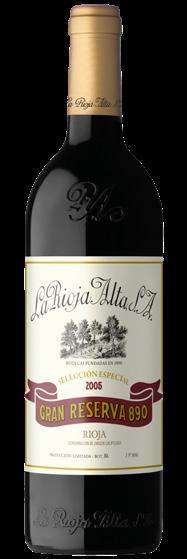
Undoubtedly the most classic wine in the tasting, spending six years in American oak and six years in bottle. Yet even in this 13-year-old example, there are signs of a famous region evolving.
Guillermo de Aranzabal says: “We try to adapt our traditional style with more colour – there’s no Viura anymore – more fruit, and more freshness. The wines are much more alive than they were before.”
There’s a velvety sophistication despite alcohol levels that are typically two degrees higher than was normal a generation ago. “What we like most in the wine is the balance,” says de Aranzabal. “If you can taste in our wines the acidity, the wood or the alcohol, then for us these are mistakes we have made.”
THE WINE MERCHANT july 2023 35
Lucie's happy to be framed
The promotional posters created by Lucie Thompson at Tivoli Wines in Cheltenham have a life beyond the events they were created for.
The eye-catching designs are artworks in their own right, making up a colourful gallery for Tivoli’s Wine Library. They have also become part of the shop’s merchandise.
Lucie, the store’s marketing manager, explains: “We’ve always had to make some kind of image for our tasting events, so that they can be listed on our website, go on social media, or be advertised in the shop.
“I want to make them as visually appealing as possible, but much as I’d love to spend my working week designing artworks for our events, that’s not my only role, so they’re quickly pieced together on Canva. Nothing fancy, but it does the job.”

The Canva app is free to use at a basic level but there is an option to pay more to enhance the experience and use more tools.

“There are plenty of templates and layouts for people who don’t know what they’re doing,” Lucie says, “but they've also made it quite creative so that you can start with a blank canvas.”

The A2-sized posters are printed on matte paper, which adds to the artprint effect, and framed before being placed in the window and, eventually, added to the growing collection on the walls. Customers can buy an unframed print for £35.

Move Over Malbec
Other Wines of South America
tickets thirty pounds, seven o'clock start
u n k n o w u k o w
28 APRIL


TICKETS £30/7PM

27 January th
ITAL
L A F A L A L A L A L A L A L A L A t h e c h e l t e n h a m C H R I S T M A S W i n e f e s t i v a l p i t t v i l l e p u m p r o o m t i v o l i w i n e s p r e s e n t s f r i d a y 2 5 t h n o v e m b e r / t i c k e t s £ 3 5 / 6 : 3 0 p m t o 9 : 3 0 p m t a s t e 1 5 0 + w i n e s & s p i r i t s b u y t i c k e t s v i a e v e n t b r i t e



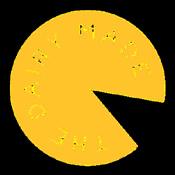







LY w n w n THE WINE MERCHANT july 2023 37 fr m g o a t h e i N 5 L P e 5 e t icket s ions ses pm s s es in es w 7 £ 4o aRts s t at A 1 3 . 10.2 2 THURSDA TICKETS £35discovery rioja spu the wi yr (re) o l d s c h o o l v s . n e w w a v e THURSDAY 04.05.23 tickets thirty pounds seven o'clock start BEAUJOLAIS BEAUJOLAIS nouveau nouveau est arrivé est arrivé lle e 2022 2022 THURSDAY 17TH NOVEMBER JOIN US FOR A NIGHT OF NOUVEAU OTHER BEAUJOLAIS WINES & SAUCISSON T I C K E T S £ 2 5 T I C K E T S £ 2 5 7 P M S T A R T 7 P S T A R T
Sparkling sales for sparkling wines
From a strictly commercial perspective, it has been another triumphant year for sparkling wine, which cemented its position as the 21st-century wine industry’s single most successful category with another set of – how else to put it? –sparkling sales figures.

On a global scale, 2022 was the biggest on record for sparkling wine shipments, reaching a total of $42.1bn, a figure made all the more impressive by the uniquely unprepossessing trading conditions (rampant inflation, low wage growth, sky-high energy prices etc) that have seen sales of other categories head in the other direction in many markets.
Indeed, according to FMCG Demand Signals – a biannual report published earlier this year by market researchers IRI based on figures collected from retailers in France, Germany, the Netherlands, Italy, Spain and the UK – total alcohol sales in Europe fell by around 4% in 2022. Sparkling wine was one of just three categories (low- and noalcohol products and RTDs were the others) to extend the sales gains made in the previous year, which had drawn the UK market back to prepandemic levels.
According to Amanda Roy of IRI, the “resilience” of sparkling wine is partly rooted in its special treat status – it’s a product that replaces to some extent the on-trade experience at home at more affordable prices, with no loss of excitement or glamour, a characteristic that also means it remains much more strongly brand-led than other parts of the wine market.
“Consumers may change the specific Champagne, Prosecco or sparkling wine brands they buy and where they buy them in order to achieve some cost savings,” said Roy.
“However, they still want a treat to mark
THE WINE MERCHANT july 2023 38
CATEGORY FOCUS cap
David Williams raises a glass to what remains the world’s most successful wine category
special occasions, even if this means purchasing Champagne and Prosecco at discounter chains rather than mainstream supermarkets. The switch to private-label brands in these specific segments is still in its infancy.”

Prosecco’s still top of the pops
Each of the main sparkling wine regions can find something encouraging in their respective 2022 sales data. But there’s no doubt that Prosecco remains the driving force of sparkling wine’s imperial phase. According to the Prosecco DOC Consorzio, the Italian fizz region grew its total sales by 1.8% in 2022, selling more than 638.5 million bottles worldwide with a value of more than €3bn.
The United States became the leading export destination for Prosecco, with exports up 6% in 2022 to 134 million bottles. While the UK has slipped into second place, the British nonetheless consumed more Prosecco than ever in 2022, with 130 million bottles imported, up 3.5% on 2021. With just over 120 million bottles sold in Italy, Prosecco is also the single most popular wine style in its domestic market.
Champagne also broke records in 2022, with global shipments reaching their highest total since 2007, the beginning of the global financial crisis, according to figures published by the Comité Interprofessionnel du Vin de Champagne. The 326 million bottles sold – a rise of 1.6% versus 2021 –also accounted for Champagne breaking the €6bn (£5.3bn) mark for total shipments for the first time. Intriguingly, the continued rise in exports (4.3% up versus last year) further cements the change in the balance between overseas and domestic sales of Champagne. Ten years ago, exports accounted for 45% of total shipments; today they represent 57%.
The third of the big sparkling three, Cava, meanwhile, could claim to have had the most successful year of the lot, thanks to significant growth in total shipments of 4.6% to 249 million bottles in 2022, on the back of the enormous gains (+17.3% in volume) made in 2021 to recover sales lost after the struggles of 2020. The picture was rather less healthy in the UK, however, where Cava sales fell by 15.2% to 16.9 million bottles, and where premium styles have struggled to break through: while the UK is the fourth largest export market for Cava sales, it languishes in seventh for
Sparkling wine has “special treat” status that replicates the on-trade experience
Reserva styles, 24th for Gran Reserva and 26th for the new, single-site top-end Cava de Paraje category.
Stock control
The stratospheric slump in Champagne sales in 2020 led the CIVC to impose a strict upper limit on production for the 2020 harvest, which was 25% smaller than in 2019. Then, in 2021, the weather caused havoc, with an unusually hot March, followed by savage late spring frosts, and heavy, mildew-promoting summer rain, all of which led to the smallest vintage in the region in 40 years. So it was no surprise that, with sales booming throughout 2021 and 2022, rumours of a Champagne shortage began to emerge towards the end of 2022, leading to some producers holding back stock in November in a bid to safeguard New Year’s Eve and Valentine’s Day supplies. While those supply issues look likely to
THE WINE MERCHANT july 2023 39
The British consumed more Prosecco than ever in 2022, with 130 million bottles imported, up 3.5% on 2021
A RARE CHAMPAGNE HOUSE
Lanchester Wines, “but Pinot Noir is the dominant force in the wine. Showing it to customers in the on-trade and to my retail customers, what's remarked upon is the balance. There’s lovely power from Pinot, but they’re still referring to the great refreshing acidity.”
Lanchester Wines’s Tom van der Neut says the Cuvée Vieilles Vignes Arbane is characterised by “a delicate petillance” and a “lightness and delicacy” that is widely admired.
“It’s certainly not just a marketing stunt,” he says. “The fact they’ve got this acreage devoted to an almost extinct variety just shows their commitment. It’s also one of the equal components in Six Cépages.”
Champagne Moutard is perfect for indies, offering unique wines such as its old-vines Arbane as well as the newly rebranded, Pinot-driven Grande Cuvée
The independent trade has always felt like the natural home for Champagne Moutard.

Occupying what might be considered the Goldilocks zone – it’s smaller than a grande marque, but larger than most so-called grower Champagnes – it doesn’t have the kind of volumes that a multiple retailer would demand, but there is a reliable supply for indies, without the unwelcome prospect of supermarket discounting.
Family-owned producers are a good fit for specialist indies, and Moutard’s credentials on this front are better than most: the family has been making wine in the Côte des Bar since 1642. Looking for sustainability? That’s a priority for Moutard too, in a region where such matters haven’t always been front of mind.
None of which would matter very much if the wines were ordinary. They are not. New exclusive UK agent Lanchester Wines is distributing Moutard’s most popular Champagnes, including its signature Grand Cuvée Brut, available in a range of sizes from halfbottle to jeroboam. Also on the Lanchester Wines list are Rosé Cuvaison and
Champagne Persin Blanc de Blancs. Dive a little deeper and you’ll discover Moutard’s artisan Cuvée Six Cépages Brut Nature, made with six of the seven permissible Champagne grape varieties. Then there’s Cuvée Vieilles Vignes Arbane, made with the extremely rare and ancient Arbane grape. Indeed Moutard is the only Champagne house to create an old-vines wine with this fascinating early-ripening white variety.
Today, the family business is led by François Moutard and his sisters Agnès and Véronique. François says: “I’ve been selling our Champagne into the UK market since the 80s and it was one of my main export markets at the time. We’ve continued our strong and historical relationship with the UK and we are proud to be able to work with Lanchester Wines to relaunch the Moutard brand into the UK with what we are confident will be a fruitful and long-lasting partnership.”
The Grande Cuvée is a 80-20 blend of Pinot Noir and Chardonnay.
“Chardonnay gives it that lovely brioche character,” says James Dainty of
Champagne Moutard’s recent rebrand has added to its credentials as a wine for gifting, as well as drinking. Lanchester Wines is presenting the range at forthcoming trade tastings, including SITT and Imbibe Live, and will be welcoming a member of the Moutard team in the autumn as part of its promotional plans.
Mark Roberts, Lanchester Wines’ director of sales, says: “We actively seek partnerships with businesses who align with Lanchester Wines’ strategy of exceptional quality and service, paired with a focus on sustainability.

“Champagne Moutard’s range and company ethos is the perfect fit for both our business and our customers.”
For more information about the Champagne Moutard range, contact Lanchester Wines 01207 521234

lanchesterwines.co.uk

THE WINE MERCHANT july 2023 40
Sponsored feature
James Dainty (left) and Tom van der Neut
continue in some markets and for some brands this year, the CIVC has been keen to talk up the role of the bountiful and (by all accounts) high-quality 2022 vintage in replenishing stocks from 2024 onwards.
Prosecco largely escaped the difficulties of Champagne in 2021, with the cooler conditions leading to a later harvest and “average” size crop, according to the Consorzio. But, like Champagne, the region’s 2022 harvest was bountiful, “a success in terms of quantity and quality, satisfying anticipated demand for 2023”, the Consorzio said.
Life was much tougher for Cava amid the recordbreaking summer heat of 2022 in its Catalan heartlands. According to the DO: “The general rise in temperatures along with this year’s lack of rainfall caused a significant reduction in quantity.
The grape harvest was, therefore, shorter, as the later varieties also ripened earlier and were harvested earlier than usual.” Growers in the region are anxious about the prospects for 2023, as severe drought continues to grip the region.
Looking to the future
Like 20th-century communist states, wine regions are fond of long-term economic plans filled with grand targets. Recent years have seen both Prosecco and Cava shake up the organisation of their vineyards and announce various sustainability targets, with Cava already well on the way to meeting its impressively ambitious aim of making all of its Guarda Superior wines (basically Reserva level and above) organic by 2025.
Earlier this year, it was Champagne’s turn, with the launch of the CIVC’s latest investment plan, outlining spending and priorities for the next decade.
At the heart of the plan is a pledge to increase the CIVC’s budget by €10m over the course of the next five years.
Much of the funds will go towards research and development, with research facilities including a “a new, redesigned vat house/experimental cellar, a new tasting room, twice as large, and a new onehectare experimental facility”.
Grape varieties will be a key part of the research, as the region looks to adapt to the challenges of the climate crisis.
The CIVC will also be spending to help the region reach its sustainability targets, with a commitment to make the region net zero in carbon by 2050.
Prosecco, Cava and Champagne are still by far the biggest players in the sparkling wine market, but one of the key factors in sparkling wine’s 21st-century success has been the growth of other sparkling wine regions. Here is a selection of some of our favourite producers in regions new and old.
Franciacorta: Ca’ del Bosco (Berkmann Wine Cellars)
Maurizio Zanella’s technologically innovative regional pioneers are still at the top of the Franciacorta game after 50 vintages.
Trentodoc: Ferrari (Enotria&Coe)
With its pristine house style, the Alpine maestro was the producer of the year at the Champagne & Sparkling Wine World Championships.
German Sekt: Reichsrat Von Bühl (Hayward Bros)
Overseen by ex-Bollinger chef de cave Mathieu Kauffmann, the Pfalz producer has been instrumental in the modern-day renaissance of Sekt.
Tasmania: House of Arras (Accolade)
Investment from owner Accolade has helped Ed Carr’s Tasmanian awards-magnet to thrive while retaining his unremittingly high standards.
Nova Scotia, Canada: Benjamin Bridge (Indigo)

Developed with the help of two leading Champagne producers, Benjamin Bridge has put the Atlantic Canadian province firmly on the world’s fizz map.
Austrian Sekt: Schloss Gobelsburg (Clark Foyster)
Michael Moosbrugger’s revivified 850-year-old estate is as fastidious with its fine sparklings as it is with its still Riesling and Grüner Veltliner.


Crémant de Bourgogne: Simonnet-Febvre (Louis Latour Agencies)
Louis Latour’s Chablis outpost has become one of Burgundy’s most consistent crémant specialists, with a fresh, incisive style.
Limoux: Etienne Fort (Vine Trail)
One of a number of small producers shaking up the Languedoc’s original sparkling heartland, Etienne Fort makes classy, gloriously focused, zero-dosage wines.
Crémant d’Alsace: Dopff au Moulin (Hallgarten & Novum Wines)
The Riquewihr-based producer has a justified reputation for the qualityprice ratio of its Auxerrois, Pinot Blanc and Chardonnay cuvées.
New Zealand: Hunter’s (Jeroboams Trade)
With stylish traditional method wines taking their place alongside the funky Offshoot pet nat, Jane Hunter sets the bar high for Kiwi fizz.
California: Carboniste (Roberson)
Dan and Jacqueline Person’s quietly revolutionary, frequently delicious take on Californian sparkling uses a range of methods (from pet nat to traditional method) depending on the fruit.
Portugal: Luis Pato (Raymond Reynolds)
The old master of Bairrada proves that indigenous Portuguese grapes can make fine fizz, from Prosecco-alike Maria Gomes to traditional-method Bical.
For the best of English sparkling wine, see our upcoming feature in the August issue of The Wine Merchant
THE WINE MERCHANT july 2023 41
FOCUS ON SPARKLING WINE
Glorious Garda
Lisse Garnett joins a trip to one of the most spectacular wine regions of Italy – and discovers that it’s more than just a pretty face. It’s home to a wide variety of styles, and new research will help growers achieve even more success through a deeper understanding of their terroir.
Lake Garda, at the foot of the Alps, is the biggest lake in Italy and “as beautiful as the beginning of creation” according to DH Lawrence, who stayed in Gargnano on the western shore for several months in 1912.
Formed by an ice age glacier, powerful enough to gouge out a deep hollow with a circumference of near 100 miles, the lake is majestically large, azure blue and bestows a benign regulating effect on the surrounding area.
Feature produced in association with Garda DOC
Broadly speaking, the climate in Garda DOC is Mediterranean, though rainfall of between 800 and 1350mm is too high to qualify precisely. Aged olive trees, fragrant rosemary, sweet lemon blossom, lavender and thyme enhance the Mediterranean feel. The northern end of the lake is the coolest: here, dramatic roads cling to mountain cliffs that appear to plunge into the cool deep water.
Garda DOC
Garda DOC covers more than 30,000 acres and is farmed by more than 250 producers and co-operatives across Brescia, Mantova and Verona. There is potential for excellence and demand has increased dramatically over the past five years. Essentially the region offers well-priced, highly quaffable, indie-friendly bottles from an unforgettable region well known to European travellers. It is hugely popular with Germans who can reach it by car in a few hours. Half of all wine produced is consumed locally and export levels are hearty. Key markets are Germany, the UK, Scandinavia and the US.
Garda DOC was originally conceived in 1996 as a sparkling denomination that would allow the 10 historical appellations it encompasses a chance to compete with their neighbours in Franciacorta and Prosecco.

THE WINE MERCHANT july 2023 42
Garda DOC offers a clear labelling opportunity, an export vehicle for wines that do not fit into the historical DOC rule book. This, a more agile category, enables a flexible approach the vicissitudes of market demand and climate change.
The first Garda DOC sparkling wine was made in 2017 and wonderful red and white wines are now being produced too. Rosé is made, but so far is only permitted in sparkling format, to protect famed existing rosés of the 10 historical DOCs of Valtènesi, San Martino della Battaglia, Bardolino, Custoza, Lugana, Colli Mantovani, Valdage, Valpolicella and Soave. Wines from Garda DOC are characterised by a salty freshness and minerality.

The principal white grapes for varietal wines under Garda DOC are Chardonnay, Cortese, Garganega, Pinot Bianco, Pinot Grigio, Riesling, Sauvignon, Trebbiano and Welschriesling. For red it’s Cabernet Franc, Cabernet Sauvignon, Carmenère, Corvina, Marzemino, Monti Lessini, Merlot and Pinot Nero. Charmat-method sparkling may be made from Garganega, Trebbiano, and Pinot Grigio; and Metodo Classico method from Chardonnay, Pinot Nero and Corvina. Rosé (sparkling only) can be made from Marzemino, Corvina and Pinot Nero.

Soil map highlights terroir diversity
The Garda DOC Consortium exists to highlight the range of opportunities the region offers consumers. It has just completed a huge study led by pedologist Dr Giuseppi Benciolini, whose work has resulted in a valuable soil map of this extensive territory. This will allow growers to cherry pick the best regions for each grape variety, produce more informed labelling and build on their existing success.
The DOC Consortium aims to increase production and so scientific research of this nature is hugely useful. The soil map has been presented in video form so we all might readily absorb its findings and marvel at the scenic beauty of the lake at
the same time.
Overall, soils are morainic, stony and calcareous. In the east, variegated limestone dominates. The south and west are predominantly moraine formations from the lake basin. The hilly eastern areas offer soils of volcanic origin. The climate is temperate, without extreme variation, thanks to the lake which acts as a buffer against capricious weather. Water from the lake ensures vines are watered and mountain winds hold back disease and promote freshness in the glass. Winters are cold, but not extreme, and rainfall is relatively even throughout the year. Hail is a problem and it can be severe in the
summer months.
Lake Garda, “Benacus” to the Romans, has the biggest surface area of any Italian pre-Alpine lake: 370 km2, compared with 212 km2 for Lake Maggiore, 145 km2 for Lake Como and 61 km2 for Lake Iseo. One of the most southerly pre-Alpine lakes, it is closest to the sea and has the lowest altitude at 65m above sea level. Fog is extremely rare, occurring for an average of three days annually on the southern shore where cold air permeates from the plain. The average temperature falls between 12°C and 17°C; the average temperature of the coldest month is around 3°C and the minimum is -9°C. Olive groves flourish.
THE WINE MERCHANT july 2023 43
The first Garda DOC sparkling wine was made in 2017 and wonderful red and white wines are now being produced too
Garda is a large appellation but there is much character in the glass. All of the wines are drinkable, fresh and clean. Some are uncomplicated and quaffable, ideal holiday fare; others demand more consideration. International varieties such as Chardonnay are proving world class and ageworthy in still and sparkling form. Longer lees ageing, amphorae and orange wines may also be found and are certainly worth seeking out.
Chardonnay
Chardonnay was first planted in Garda DOC during the 80s and is particularly prized. Of the 153,000 hectolitres of wine the DOC produced in 2022, 42,000 hectolitres were Chardonnay. Some of the Chardonnay is made by drying the grapes (appassimento) as in red Valpolicella; this makes for a wonderfully rich, fresh, supersapid, salty, zingy, lime-laden, herbal palate which blew many of us away. (Ricchi Garda Chardonnay 2021)
Pinot Grigio
Pinot Grigio, highly sought after for its fresh floral apricot notes, weighed in at 35 hectolitres in 2022. We tried various deliciously sublime, oily almond textured, blossom-rich, pear and candied lemonscented super-silky examples. Dry and salty, fresh with mineral notes and moreish fruit, these were wines to quaff and consider, textural and not in the least bit one dimensional. Fresh yet full. (Cadiz 1898 2022, Santa Sofia 2022)
Garganega
Garganega is typically redolent with honey, almonds, peach, melon, tangerine and pears. Some 30,000 hectolitres were produced in 2022.
Cabernet and Merlot
Red wine is more suited to the east; white dominates the south, and the west is ideal for red and rosé. Much is made of Cabernet and Merlot, which cover 577 and 377
Big variety within a big wine region

Garda DOC offers a rich mixture of native and international grapes, producing a range of wines that can suit all palates and occasions
hectares respectively. Cool breezes, hills and poor shallow soils allow for fresh structured reds. Ripeness is easily achieved but a wonderful herbaceous spicy garrigue note might be found in the reds too. We tried Merlot from Lombard’s morainic hills (Perla Del Garda 2016) and found an
elegant, complex, spicy, saline-noted wine of some complexity. Fresh and savoury with Asian plum, it’s a wine well worth tasting. The Cabernet we tried was soft and round; redolent with raspberry, blackberry, leather and tobacco. Fresh, herbal, bitey and tangy. (Santa Cristina 2020).
THE WINE MERCHANT july 2023 44 FOCUS ON GARDA DOC
GARDA DOC PRODUCTION RULES
Spumante wines may undergo secondary fermentation either in bottle (Metodo Classico) or in autoclaves (Charmat)
Grapes for Passito must be dried to achieve a minimum potential alcohol level of 14% and cannot normally be pressed before November 15.
Minimum alcohol level: 10% for frizzante wines (10.5% potential); 10.5% for still white varietals and Marzemino; 11% for Bianco, Pinot Nero and Charmat Spumante; 11.5% for Rosso, Cabernet, Cabernet Sauvignon, Corvina, and Merlot; 12% for Metodo Classico Spumante and Riserva; 12% for Passito (14% potential).
Residual sugar: Metodo Classico Spumante can range from brut nature (zero dosage) to extra dry; tank-method (Charmat) Spumante can range from brut nature (zero dosage) to demi-sec.

Ageing: For Passito, minimum approximately 10 months.
A rich history to match a rich wine offer
Lake Garda sits on Italy’s northern border at the base of the Italian Alps and the Dolomites, strategically positioned between the Po Valley and northern Europe. Switzerland, Austria and Germany are closer to Garda than they are to Rome and the region has been the site of many battles. Bucolic Garda is a sought-after spot: ruined Roman villas dot the shoreline and castles bear testament to man’s desire to hold dominion over the region. The Venetians even transported ships laboriously overland to fight the Milanese on the lake. Today you can visit the Venetian neo-gothic villa at Isola for a touch of Venice’s architectural magnificence.

Garda was known as Lake Benaco (after a Roman water god) until the Middle Ages when the Germanic name Garda, meaning “place of guard”, stuck. The Lombards settled about the lake during the 6th century and were most likely responsible for rechristening its shores. The northern reaches were part of the Austro-Hungarian Empire until World War I.
This area of Italy saw a huge amount of action during World War II. Mussolini ran his Hitler-sponsored republic from Salò where there is a museum that contains some fascinating propaganda from those dark times. The hugely controversial nationalist poet D’Annunzio’s villa at Gardone is really worth a visit, too.
Famous Brits have also been irresistibly drawn to Garda over the past two centuries. Tennyson, DH Lawrence and Byron have all waxed lyrical about the light and gold-hued majesty of the place. All were bewitched by the intoxicating pleasures bestowed on the eye, the tongue, the stomach and the lips by this intoxicating region.
THE WINE MERCHANT july 2023 45
Stories from South America
in
Harvest part I: Heartbreak and heat in Chile
There’s no way of getting round it, 2022-2023 was an exceptionally difficult growing season on both sides of the Andes. Indeed, “difficult” barely covers the tragedy that befell large parts of southern Chile in January, when wildfires spread through the Maule, Itata and Bío Bío Valleys, taking the lives of 24 people and destroying 50,000ha of forest and countless homes and businesses.
The wine industry was hard hit by the fires, with around 600 producers, many of them small family-owned concerns, affected in some way, whether that meant destruction of their winery buildings, loss of their vineyards (around 470ha were thought to be destroyed in total, including some of the country’s oldest and most treasured old vines), or, via the pernicious effects of smoke damage, spoilage of their wines.
The fires were the most visible and shocking manifestation of one of the hottest vintages in Chile in decades, with a succession of heat waves from January onwards coming against a backdrop of a years-long drought in the country. That led to one of the earliest harvests of recent

years, with grape picking taking place as much as three weeks earlier than usual.
In terms of both quality and quantity, though, it’s hard to generalise: while the total Chilean harvest was down by as much as 15% by most estimates, with the warmer inland valleys and the situation in the south accounting for much of the drop, many of Chile’s coastal sites, and northerly areas such as Limarí, reported normal crops.
There is no doubt, however, that Chilean winemakers are concerned by the increasingly challenging climatic
conditions. “This year has been special as historically this is the earliest we have ever started harvest,” says Gerardo Leal, viticulture manager at Santa Rita Estates.
“The effects of high temperatures are affecting the entire country. The situation requires maximum effort from the whole team, particularly those in production in both the winery and in the vineyards.
“Everyone must communicate, coordinate and work as a team, thinking both about the quality of the grapes and wines, as well as avoiding yield losses.”
THE WINE MERCHANT july 2023 46 REGIONAL FOCUS
David Williams considers some of the facts of life facing winemakers
Argentina and Chile – some of them natural, others that are definitely man-made
A forest fire in Bío Bío, Chile

Harvest part II: A sadistic switchback in Argentina
In Argentina, while nothing matched the extremity of the tragedy seen in southern Chile, the vintage was arguably even more testing from a viticultural point of view.
A year of seemingly never-ending and sadistic challenges from the weather gods began with devastating frost, as an unusually late polar weather front swept through the country in late October and early November.
In a situation strongly reminiscent of the 2021 vintage in France, the frost brought a 25% reduction in yields across the country, with many producers losing their entire crops for the year.
Low-lying parts of Mendoza (Paraje Altamira, El Cepillo and La Consulta) and Patagonia (which saw its overall yields decline by 50%) endured the worst; higher altitude sites in Mendoza and Salta got off relatively lightly.
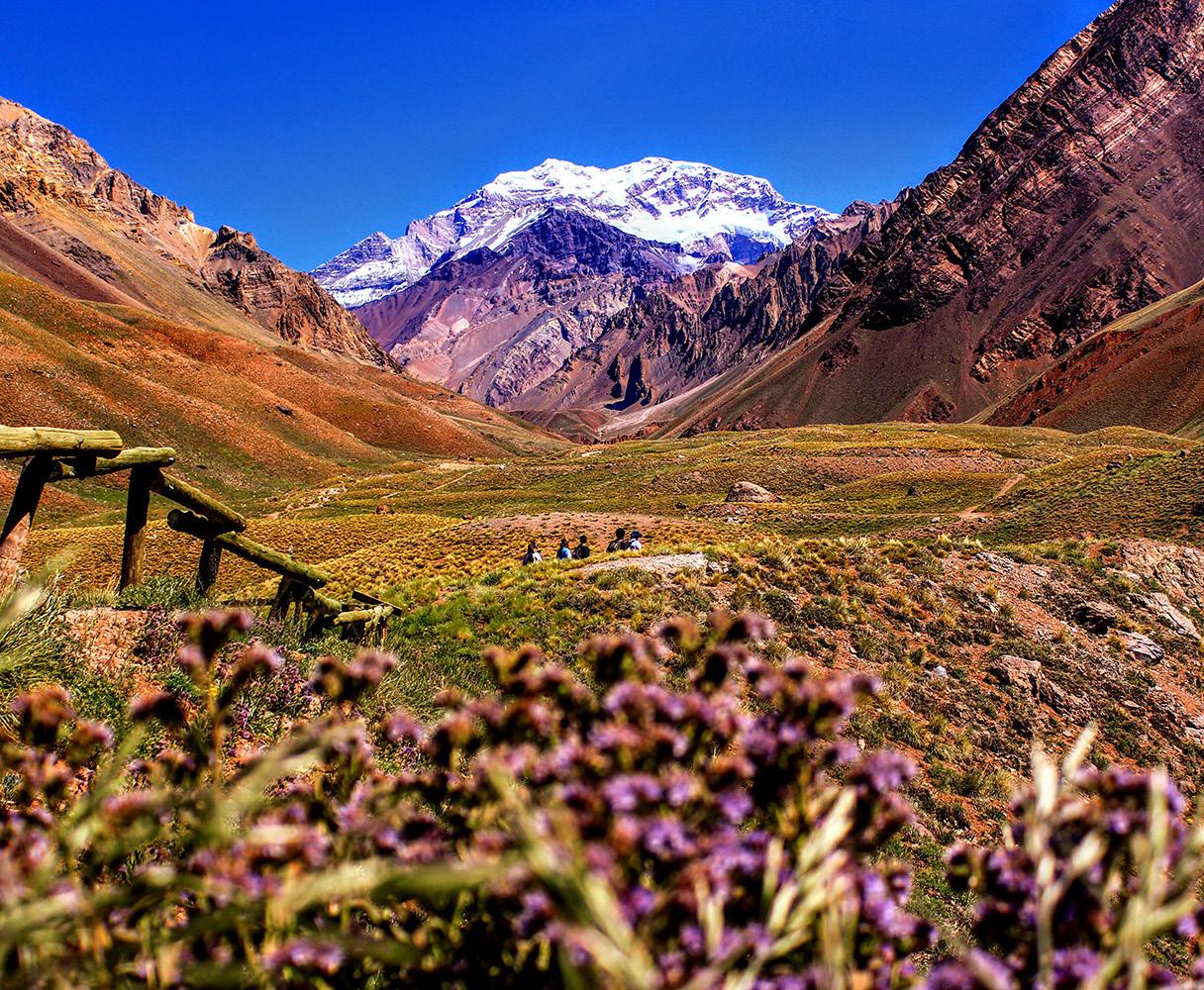
The next blow came in December and January, with hailstorms – a perennial scourge of Argentinian winemakers –causing significant problems across the
country. What crop remained now had to endure a period of extreme heat: 2023 was the hottest harvest since 1961, featuring an average daily temperature in Mendoza of 31°C in January. Harvests were advanced, and the final national crop was the smallest since 1960.
With the wines still in the earliest of stages, it’s much too soon to talk about quality – although, inevitably, the PR battle is already being waged, with winemakers talking up the quality of the whites and the “ripeness” of the reds. In this, as in so many other ways, they are now clearly a match for their counterparts in Bordeaux.
THE WINE MERCHANT july 2023 48 FOCUS ON SOUTH AMERICA
Aconcagua Park, Mendoza
Finca Ambrosía
Gualtallary, Uco Valley
After two decades, this highaltitude vineyard is now attracting the sort of recognition enjoyed by its illustrious neighbours
Imported by Vinicon Ltd Call 020 8150 5600 for more details
Back in 2002, a group of friends – 11 people from seven countries – decided to plant a vineyard. They settled on Gualtallaray, 1250m up in Argentina’s Uco Valley.
At the time, it was a lonely sort of place, with only a couple of neighbours. But since those neighbours were Moët & Chandon, and Zapata Catena’s now world-famous Adrianna vineyard, it seemed clear they had chosen their location wisely.
Uco’s elevation and limestone-rich alluvial soils meant Finca Ambrosía, as it was named, was soon producing stunning Malbec, Cabernet Sauvignon, Chardonnay and Cabernet Franc. In the early years, this fruit was snapped up by some of Argentina’s top wineries, including Trapiche, Altos Los Hormegas and Viña Cobos.

In 2010, the revered Argentinian winemaker Daniel Pi came on board, and was asked to make some wine for Finca Ambrosía’s owners. One of the bottles he produced later came to the attention of Robert Parker, who awarded it 95 points –not bad for a first vintage.
Pi remains a member of the Finca Ambrosía family, helping the winemaking


TO SELECT YOUR SAMPLE …
… scan the QR code to receive a selection of Finca Ambrosía wines

team craft their own artisanal style of highaltitude wines, which are sought after for their freshness, elegance and fruit purity.
The range has been extended to include Sauvignon Blanc, a Blanc de Blanc sparkling wine and a Bordeaux-style Grand Cru blend.
In Europe, the wines are being represented by Vinicon, whose agency director Elaine Taylor was blown away by what she found on a recent visit to the Gualtallaray estate.
“It’s a big commitment for a small business like ours, but it feels like a very good fit,” she says.
“They are a dynamic set of people who decided that this is what they were going to do. They worked with a geologist and made sure that the soil was good. And they planted based on results.
“Since then, they have always made sure that they are challenging themselves. Is that the right cross? Is that the right clone? Could we be doing things better? So yes, it is a beautiful romantic story. But there is a lot of work that goes on to make sure that the romantic story actually produces good wine at the end.
“Daniel Pi is absolutely legendary, and a very relaxed and humble man. He’s very much been the lynchpin in structuring the wines and is really involved on a day-today basis with the winery.
“They have some very highly rated and highly valued neighbours. So it will be good to see Ambrosia achieve the same sort of recognition.”
2021 Vina Unica Chardonnay

A classic modern Chardonnay, with elegant oak and delicate integration and balance. On the nose there are crunchy red apple and lemon notes and a subtle smoky and white pepper hint. It’s creamily textured on the palate and opens up generously with many layers of apple, pear and spices. Its very bright acidity makes for a great Chardonnay expression.
2021 Vina Unica Cabernet Franc
A ripe, expressive and bold style that shows the great affinity of Cabernet Franc with Gualtallary terroir. With generous ripe prune and blackberry jam in the nose and the palate, it is elegantly balanced with vibrant acidity and velvety tannins. It delivers extra layers of complexity with a gentle herbaceous and graphite undertone, lingering in a long, savoury finish.
2020 Vina Unica Malbec
This Malbec boasts a complex flavour profile with notes of black fruit, dark plum, vanilla, cedar and spices. The palate shows pure, ripe red cherry notes, complemented by bright, fresh acidity and a long, floral finish. The wine has a chalky texture that is well balanced with a medium palate weight.
THE WINE MERCHANT july 2023 49
PRODUCER PROFILE
//
Sebastián Zuccardi
Zuccardi, Uco Valley, Argentina

We make mountain wines. The Andes provides us with the soils, water, climate, and altitude, which are four determining factors for wine quality. In our winery, we strive for wines that express the sense of place, that truly embody the vineyard without any “make-up”.
Our mission is to cultivate wines with identity. Wine is the expression of the landscape, climate, soil and our philosophy in a specific location. Our approach is to interpret what the land contributes. Our most important work in the vineyard is to preserve that essence naturally, caring for and respecting the terroir.
We aim for wines that express the sense of place, that have identity and showcase the essence of the soils, extreme climatic conditions and high-altitude vineyards where they are grown. We cultivate wines with transparency, tension, energy, finesse, and freshness. This freshness comes from the cool nights and climate at high altitude, maintaining bright acidity, as well as our meticulous selection of when to harvest, to avoid overripeness.
The diversity of the soils, altitudes, and microclimates in the Uco Valley leads to micro-terroirs that have distinct characteristics and influences on the grapes and in the wines. Micro-regions such as Paraje Altamira, La Consulta, Vista
Los Olivos Malbec

RRP £12.90
Los Olivos Malbec shows our beloved Malbec from the Uco Valley, with its fresh red fruit and silky tannins. This wine is a great introduction to the region and its emblematic varietal, and showcases the elegance and concentration of wines from the Uco Valley.
Flores, Gualtallary, El Peral and San Pablo show marked differences in altitude, position with respect to the mountain and soil profiles ranging from clay-rich, to sandy, to extremely stony, within short distances.
We discovered that concrete is a great partner. It is a natural material that does not impart any flavour or aroma to the wine; it permits less micro-oxygenation and it is a material that was historically used in winemaking in Mendoza. In a way, the winery is going back to the future. Most of our wines today are fermented and aged only in raw cement vessels. The winemaking team uses large, untoasted oak barrels and foudres when the wine’s development will really improve with oak ageing, or if the varietal needs more microoxygenation.
I am privileged to work in one of the most unique places in the world. The landscapes where we work are spectacular. Today, soil analysis technology and drip irrigation allow us to cultivate in highaltitude locations with steep slopes and
Apelación Cabernet Franc
RRP £19.60
This comes from our vineyards in Paraje Altamira, the first area we planted in the Uco Valley. The soils originate from the alluvial fan of the Tunuyán River, where we find sandy loam soils with stones covered in calcium carbonate at depth, giving the wines rich texture and minerality.
Sebastián joined the family business in 2002. As winemaker he focuses on individual site selection within his vineyards, working with the soil and the land to create wines with a sense of place.
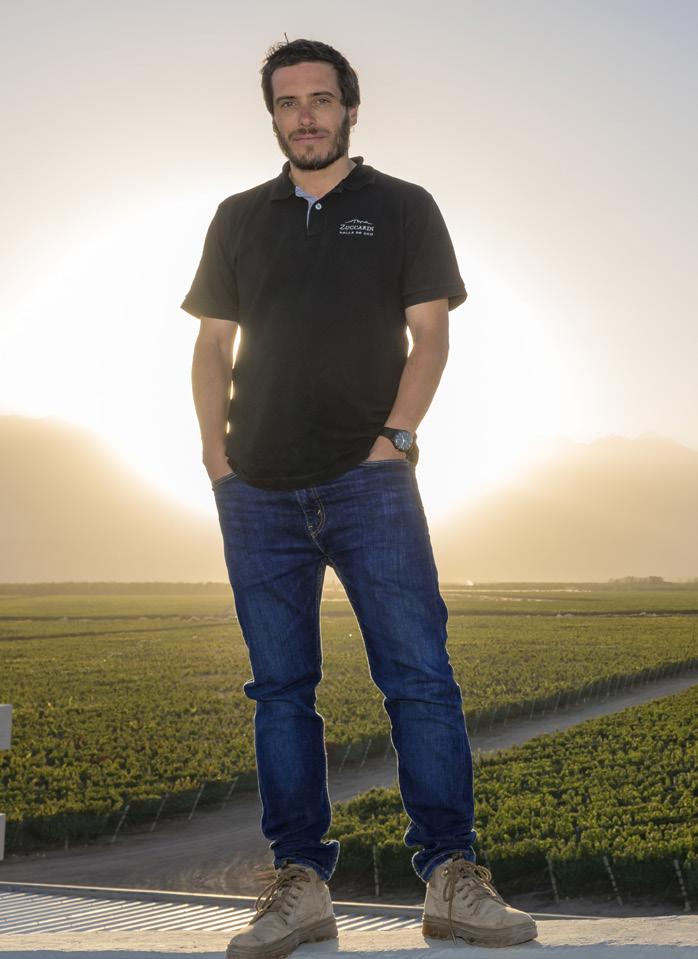
Wines imported by Hatch Mansfield
stony soils. Planting a vineyard in these places can be extremely laborious, but the results are fascinating.
Malbec is undoubtedly the variety that best expresses the diversity we have in areas like the Uco Valley. It is transparent in the sense that, while it expresses common characteristics of the variety wherever it is planted, it also highlights aromas and textures that are specific to each terroir. Other red varieties that have adapted to our region in a very interesting way are Cabernet Franc and Bonarda. We are also quite excited about the high-quality white wines, especially those coming from the highest areas of the Uco Valley. We are seeing quite remarkable wines from varieties such as Chardonnay, Semillon, Sauvignon Blanc, Verdejo, Albariño and Riesling, among others.
We will continue showcasing new terroirs within the Uco Valley, through both new red and white wines. Argentina has shown that its winemaking is truly world-class. However, there is still room for development, and we have regions that can truly compete on the global stage. We need to demonstrate that we can cultivate wines that rival the great terroirs of the world in terms of longevity, concentration and elegance. We have the potential to do so, and our team at Zuccardi Valle de Uco is committed to leading this movement.
Botánico
RRP £53.85
100% Chardonnay. A Paraje wine that expresses a unique site called Gualtallary Monasterio, located at an altitude between 1360m and 1385m above sea level with stony soils and surrounded by rich native vegetation. It is quite a generous wine, expressing the wild and intense conditions of the place.

THE WINEMAKER FILES //
THE WINE MERCHANT july 2023 50
What’s the ultimate Argentinian Malbec? That was a question that the Doña Paula team asked themselves 20 years ago. They ask the same question today, and the answer is not quite the same as it was then.

The first Selección de Bodega wine, from the 1999 vintage, was released in 2003. According to Martin Kaiser, Doña Paula’s current director of winemaking and viticulture, the team were searching for “the best expression that Malbec can achieve in Argentina”.
In 1999, this quest led them to the El Alto vineyard in Ugarteche, Luján de Cuyo, parts of which date from 1969. Here, just over 1km above sea level, they found a small plot where the grapes were of exceptional quality, and so Selección de Bodega was born.
Being blessed with a variety of premium vineyard sites, Doña Paula was able to consider its options for subsequent Selección de Bodega releases. Grapes from the Los Indios vineyard in San Carlos and the Alluvia vineyard in Gualtallary, Uco Valley, all featured.
Only after many years of in-depth research into the effect of soil and climate on Malbec flavour profiles, as part of a project called Terroir in Focus, did Alluvia – the highest vineyard in the company’s portfolio, at nearly 1.4km – finally emerge as the best source of fruit capable of making truly world-class wine.
Selección de Bodega grapes are hand-harvested from a series of carefully selected plots on the Alluvia vineyard, Kaiser explains. Here the soils are stony and high in calcareous content, which gives great complexity and minerality.

“After harvesting, grapes from each plot are microvinified separately,” he says. “The best wine is then aged for 24 months in French oak barrels. Each barrel is assessed, and only then is the final blend assembled and further aged for 12 months in a bottle.
“Through this process, and with its combination of elegance and personality, Selección de Bodega has become a worldwide ambassador for Argentinean Malbec.”
The ultimate Malbec scales new heights
The 2019 Doña Paula Selección de Bodega celebrates the 20th anniversary of a truly iconic Argentinean wine

About the 2019
Tasting notes: On the nose, aromas of blackberries, blueberries, and raspberries, with mineral aromas reminiscent of chalk and graphite. In the mouth it has a great structure and freshness, resulting in a balanced acidity. With firm and juicy tannins, it has a very persistent finish, making it ideal for prolonged ageing.
2019 Awards and Accolades
96 points, Descorchados
95 points, Gold Medal, International Wine Challenge
94 points, James Suckling
94 points, Tim Atkin
Descorcados 2023: Best Malbec; Best wine from Gualtallary
Distributed in the UK by North South Wines: RRP £65 northsouthwines.co.uk hello@northsouthwines.co.uk 020 3871 9210
www.donapaula.com

THE WINE MERCHANT july 2023 51
Sponsored feature
FOCUS ON SOUTH AMERICA
South American old vines: The best of times, the worst of times

The heartbreaking wildfires in southern Chile were, for good reason, the biggest news story when it came to discussions of South America’s remarkable old-vine heritage this year. The clean-up and repair job continues, and there are plenty of heartening anecdotes of mutual aid among small producers, and a sense that many more precious centenarian vines may have survived than had at first been feared.
For now, the flow of great South American old-vine wines continues, with new or newish (or new to us) names to look out for including La Despensa (British expat Matt Ridgway’s boutique producer
featuring delightfully elegant old-vine País and Cinsault, as well as Sangiovese, from Colchagua); La Cayetana (Emilia Soler’s project includes a gloriously supple fragrant Malbec from an ancient 7ha Mendoza vineyard that used to be owned by Argetinian restaurant chain, The Gaucho Grill); and Bodega Montes Toscanini (a satisfyingly Bordeaux-esque old-vine Tannat from Canalones in Uruguay).
Another story on the positive side of the ledger was the presentation of The Old Vine Conference’s inaugural Old Vine Hero award to a South American winemaker, Argentina’s Laura Catena, founder of the Catena Institute of Wine and managing director of Catena Zapata, Luca Wines and Domaine Nico, acknowledging her long-standing commitment to safeguarding Mendoza’s extensive but endangered old vine stocks.
“When I started working in wine in the 1990s, it seemed like Old Vines were mostly valued in Europe,” Catena said on collecting her award. “Then I found that we had thousands of hectares of old Malbec vines in Argentina which were in the process of being pulled out for replanting.
“I am an emergency doctor by training, and I can recognise an emergency when I see one. I set out to make wine from these beautiful old vineyards and then to preserve their genetically diverse massal selections.”

THE WINE MERCHANT july 2023 52
Laura Catena
Pablo Morandé started out in 1996 with three partners. He was the man behind the wines and the vines. His dream at the beginning was of a small-scale winery making high-quality wines. Then, at the crucial moment, he changed the plan. He kept the idea of top-quality wines, but his experience of 20 years in a big company persuaded him you must be big if you want to do something impressive in Chile.
Pablo was already working in Casablanca and had a good knowledge of Maipo and so the revolution started from there. He was working with old vines and some little-known varieties at that time, like Cinsault and Carignan. We continue that journey with the Morandé Aventura range.
I have some favourite varieties but it changes all the time. Right now I have a crush on old-vine Pais and Cinsault from Itata. My love for Cariñena from Maule is already deep and stable. Our new Malbec and Sauvignon Blanc from Casablanca, fermented in foudres, are also favourites. A classic for me, which is in the middle of a modernisation process, is Cabernet Sauvignon from Alto Maipo.
Morandé was the first to introduce oak fermentation for its coastal Sauvignon Blanc, in foudres, and to work with the lees. The idea was to show more depth and complexity in a variety that works beautifully in Casablanca, but until that time in only one expression: an aromatic, pure varietal style fermented in stainless steel.

A few years after establishing Morandé,
Pablo planted two properties: one in Casablanca (Belen Estate) and one in Maipo (Romeral Estate). These are highdensity vineyards, with more than 10,000 vines per hectare. He was looking for highquality, low-yield grapes.
Morandé also produced the first truly 100% noble rot wine in Chile. We still continue to make this wine.

Innovation is still perhaps the most important engine of Morandé. That innovation can mean reassessing old vines and old areas as well as looking forward, with new regions, such as Traiguen and Malleco. Now we are looking further south than the Malleco valley, and at coastal Colchagua, and we’re developing a Cabernet Sauvignon from an old dryfarmed vineyard in Itata.
Terroir wines talk about a place, a climate and a history of the people behind that place, which can be interesting to consumers with a little more curiosity. There is a reason why old vines remain in a place: they have adapted to a specific terroir, so these are pure wines that reflect local culture.
Morandé believes that certain valleys are truly the best. We evolve our winemaking because we understand the place better. We also keep an eye on how our consumers are responding.
We no longer try to dictate the style of a wine; to decide how that wine should be. We want as pure an expression of a terroir as we can. Our wines are always an expression of the fruit and the place.
Ricardo Baettig
Viña Morandé
Ricardo graduated in agronomy at the University of Chile and worked as a winemaker before gaining a master’s degree in viticulture and oenology at the University of Turin.

After five years working in Italy, he was invited to join Morandé, widely regarded as one of Chile’s most innovative and exciting wine producers.
RRP £12.99
Highly Commended in the Wine Merchant Top 100. A pure, uncomplicated wine made with fruit from 60-year-old vines. This juicy wine shows plenty of fruit flavours, soft tannins and freshness. Fermentation takes place in concrete eggs and in open wooden tanks.

Sauvignon Blanc RRP £12.99
This comes from our Belén vineyard in the coldest sector of Lo Ovalle in Casablanca. It is herbaceous, mineral and citrusy: a one-of-a-kind white. It illustrates how we can create a more sophisticated wine from a classic grape by thinking outside the box.
Cabernet Sauvignon RRP £16.99
A classic terroir wine, which represents the past and future of high quality reds from Chile. Aromas of plums, blackcurrants and cherries, with notes of fresh tobacco, cinnamon and roasted coffee beans. Rounded, delicious, persistent, balanced and complex on the palate.
THE WINE MERCHANT june 2023 53 THE WINE MERCHANT JUNE 2023 53 THE WINEMAKER FILES //
Gran Reserva
Estate Reserve
Terroir Cinsault / Pais
Imported by Berkmann Wine Cellars
THE WINE MERCHANT july 2023
The Malbec Dollar: A glass of state aid
Dealing with the chronic instability of the wider Argentinian economy is part of life for anyone working with the country’s wines, and the source of a certain barbed black humour for importer and producer alike.

But this year the Argentinian government has taken at least some steps to provide assistance for the wine sector, having finally been prompted into action by the 2023 harvest’s drop in yield, which was 34% down on the 10-year average.
Christened the “Malbec dollar” by the Argentinian press, the plan gave winemakers some relief from the difficulties created by its exchange rate policies.
A little context is required here. The Argentinian government has been keeping the peso’s value artificially high as part of its campaign to fend off a recession, build up its dwindling dollar reserves, and service its ballooning ($40bn and rising) debt to the IMF. The reality in Argentina, however, is that there are competing exchange rates, with the official, government rate some distance from the “blue” rate on the ground.
Quite apart from the reduction in value from the moment the dollars hit their account, the problem for exporters lies in the difference between the two rates: when they export, they receive dollars into their bank accounts, which are processed using the official rate (at the time of writing, 235 pesos to the dollar).
When the winemaker pays for imports (as they are required to do for everything from packaging materials to winemaking equipment) they are using the “blue” rate, which is currently roughly 400 pesos to the dollar.
Initially proposed in March, and with the exact figure yet to be set at time of writing,
the “Malbec Dollar” hopes to take the sting out of the gap between the official and the blue exchange rates by introducing a new exchange rate (likely somewhere between the two) specifically for wine and other
agricultural products. For an industry battling with historic drought and rampant inflation (60%), it may be a drop in the ocean, but it might, all the same, be enough to keep some struggling producers afloat.
FOCUS ON SOUTH AMERICA THE WINE MERCHANT july 2023 54
Street art in Buenos Aires
Villalobos
Miguel Torres Chile
I come from a family that breathed nature and country life. The possibility of dedicating myself to wine, even though it was always present, was a decision that I finally made when I was studying agronomy and it’s been one of the best decisions of my life.
The best results in the vineyards are achieved by understanding the characteristics of the place, such as the soil, climate, geography, varieties used etc. There are lots of aspects and the better I can understand the landscape and its characteristics, the better results I’ll get. That was the most interesting part of my agronomy degree course.
The most important vineyard areas in Chile are currently found between the 30th and 40th parallels, which are more than 1,400km apart, comparable to the distance from London to Rome. There’s a wide variety of climates and soils, geography and vineyard management methods over this distance.
Northern Chile has a semi-desert and arid climate, while in the central region, the climate is Mediterranean, and in some specific regions of the south it can be oceanic. Chile has the Andes Mountains, which makes it possible to have highaltitude vineyards with conditions that are totally different from the Central Valley.
Cordillera Chardonnay

Cordillera Chardonnay is a unique wine, bred from three excellent types of Chardonnay with different characteristics and always originating from the same estates in the Limarí Valley. The grapes are fermented in new French oak and the wine is aged on its lees for nine months. The wine has a particular character that is the hallmark of Limarí’s calcareous soils.
Over the last 15 years, I think we’ve made a lot of progress in understanding which varieties adapt best to the different conditions we have, with very interesting results, but we also have to see how the climate changes and to have the ability to adapt.
We’ve obtained very interesting results is the Chardonnay from extreme areas in northern and southern Chile. In more coastal areas of the north it produces very saline and fresh wines with a unique typicity, while those from the south have a unique freshness and creaminess.
The Mediterranean red varieties that adapt very well to hot, dry climates include Syrah, Carignan, Mourvedre, Grenache, and Cinsault, as well as white varieties that are less common in Chile such as Viognier, Marsanne and Roussanne, which have adapted very well to the climate and can produce great wines. There are also very interesting wines produced from varieties that have adapted to the
Cordillera Carménère

The wine has its origin in the famous Terroir of Peumo in the Cachapoal Valley. The vineyard is on a foothill, on granite soils of colluvial origin with a clay loam texture and the presence of stones, offering very good drainage and low fertility. This is ideal for controlling vigour and obtaining very limited production of an excellent Carménère.
Eduardo joined Familia Torres in 2018 to head up Miguel Torres Chile’s winemaking team. Today he is in charge of the new vineyard projects of Familia Torres in Chile, with special focus on the rescue of ancestral varieties and a commitment to southern regions.

Wines imported by Fells
conditions in Chile over 400 years, which were relegated to lower-quality wines, such as País, Muscat of Alexandria, and Semillon, which can be amazing.
We’re now using wooden foudres that are larger than the typical 225-litre barrels, with the aim of making wines that are purer and where the wood can be a plus without distorting the unique result from the terroir. We also use differentshaped containers to age the wine that make it possible to get different results, such as conical tanks, egg-shaped tanks etc. Each container can produce a different result.
At Miguel Torres Chile today, the effort has been put into vineyard management, and working them sustainably. All of our winery-owned vineyards are managed organically. Two years ago we started with regenerative agriculture, where one of the most important aims is to keep the carbon in the soil, giving more life to the soil and creating a benefit by releasing less CO2.
Our wines have less and less intervention; they’re fresher, with more moderate alcohol levels, and they try to show the place they come from and its characteristics in the best way. Today, we’re making wines with more unique expressions of where they come from.
Manso de Velasco
This icon wine was produced when Miguel first came to Torres Chile in 1979. The Manso de Velasco Estate is dedicated exclusively to Cabernet Sauvignon, which produces a wine with concentrated and deep pigment. This wine is made only with grapes from vines that are over 115 years old which add to the intensity of its flavour.

THE WINEMAKER FILES //
Eduardo Jordán
THE WINE MERCHANT july 2023 55
Growing varietal strength in depth

There is a reason that Argentinian Malbec, Chilean Cabernet and Uruguayan Tannat take the lion’s share of plantings, sales, and high-scoring wines in their respective countries: these are modern classic wine styles that have been refined over many vintages, and they are unlikely to lose their top-dog status anytime soon.
But one of the stories of the contemporary scene in each country in
recent years is the increasing confidence winemakers have in making wines from a long list of varieties – and the quality of the best examples dispels any notion that they are mere novelties.
One of the standout grapes in recent years across the continent has been Cabernet Franc, which works beautifully as a more structured, perfumed, fresher foil to Cabernet Sauvignon in Chile and Malbec in Argentina – but also creates such distinctive varietal wines as Undurraga Cabernet Franc TH from Maipo and Mauricio Lorca Block I Cabernet Franc from Mendoza.
Albariño has been making a splash in Atlantic coastal Uruguay for some time thanks to the work of pioneers such as Bodega Garzon, but Juan Carrau’s barrelaged take on Gascony’s Petit Manseng is also well worth investigating. And the suitability of Rhône varieties in much of Chile continues to emerge in both its increasingly superb Syrah and in whites both varietial (Viognier) and blends. Two to try: the alluringly ripe but racy Altos Los Romeros Roussanne Marsanne from Colchagua and the vivid northern Rhônealike Emiliana Salvaje Syrah-Roussanne from Casablanca.
THE WINE MERCHANT july 2023 56 FOCUS ON SOUTH AMERICA
Vineyard workers in Aconcagua
THE DRAYMAN

Costs go up, alcohol comes down Brewers argue that lower abv keeps a lid on inflation. But we still pay a price
Today’s word is drinkflation. It was only a matter of time in the current economic climate until major brewers reduced the abv of some beers to save duty.
It is, of course, a drinky version of shrinkflation, the common food industry procedure of reducing the size of, say, a chocolate bar to save costs, without passing on the saving to consumers.
It’s fodder for the national press, and the culprits who’ve been outed for sneaking in changes include Greene King, reducing Old Speckled Hen from 5% abv to 4.8%, and Heineken, whose Foster’s has gone down from 4% to 3.7%. Shepherd Neame’s Spitfire ale was 4.5% abv and is now 4.2%, while its Bishops Finger has gone from 5.4% to 5.2%.
The brewers argue that they’re merely preventing price increases that might otherwise be caused by rising costs, rather than profiteering, and they may have a point.
More disingenuous is the suggestion by some that they’re helping to promote
healthy lifestyles by making beers less strong. This is, frankly, a load of nonsense. The benefits of drinking a single pint at 4.8% abv versus 5% are minimal and, logically, only become proportionally more significant if you drink much larger quantities, thus defeating the object.
Some of the media discourse around this whole outcry has taken a diametrically opposite stance: that consumers are being short-changed in their potential to get hammered by the shortfall in alcoholic strength, while being asked to pay the same.
This is nonsense for the same reason as the brewers’ pleas about health benefits
– the relatively small changes in abv in question. Someone drinking 4.8% abv beer as opposed to 5% abv beer would have to drink 25 pints before feeling they’d drunk a pint less – before taking into account their ability to do so, the impact of doing so on their judgment and the high likelihood of passing out before they got there.

What the debate has highlighted is just how wrong the nation’s conversation about beer is and has been for decades, with its focus almost entirely on price and strength rather than product quality and what the stuff actually tastes like.
The alcoholic strength of beer comes from the amount of fermentable sugar that the yeast has to work on, which primarily comes from malted barley, though sometimes from other grains.
Reducing the barley content – essentially diluting the recipe a touch – impacts the beer’s flavour and body.

Many smaller brewers successfully create flavoursome beers at sub-3% abv, usually by ramping up the quantity of hops – which don’t play a part in the creation of alcohol – to mask any shortfall from the lower grain quantity. These are genuine attempts to meet consumer demand for high quality but lower overall alcohol intake.
These are not, however, the actions of a big brewer trying to save costs or stave off price increases, because adding hops to compensate for the reduced barley content would only send costs back upwards – and hops don’t come cheap.
So, the real question for big brewers about drinkflation is “how does your beer’s taste stack up compared to how it was before?”, though it’s one that hardly seems worth asking if all it elicits is a bland press office-coiffured statement containing the words careful, best ingredients and values
Some Camra tickers will claim to have savant levels of recall of historical recipe versions of famous brews that would probably confirm our worst suspicions. But the rest of us mortals will probably never really know.
THE WINE MERCHANT july 2023 57
Counting individual malt grains seems a little extreme
Reducing the barley content – essentially diluting the recipe a touch – impacts the beer’s flavour and body. Increasing hops only sends costs back up
How well do you know New York
There’s a real buzz around the winemaking scene in the US state, which is embracing international varieties as well as its nati wines with modern appeal and a distinctive personality. The good news for UK merchants is that more of these wines are finding
It’s not just one big region
New York has seven American Viticultural Areas (AVAs) and four sub AVAs.
The Hudson River Region and Finger Lakes were the first to be established in 1982. Finger Lakes has two sub AVAs: Cayuga Lake and Seneca Lake, and their names are Native American. Cayuga means “boat landing” and Seneca means “place of the stone”.
Lake Erie, the only AVA not contained entirely within New York State, comprises a 53-mile grape belt spanning New York, Pennsylvania and Ohio.
Long Island also has two sub AVAs: Hamptons, Long Island and North Fork of Long Island.
The Niagara Escarpment gets its name from a limestone ridge that runs for over 650 miles through the Great Lakes Region. Champlain Valley of New York was
established in 2016 and Upper Hudson in 2018.
A complicated climate
Nearly all storm and frontal systems moving east across the US pass through or near New York State, creating a diversity of temperatures not usually found within an area of comparable size.
With a unique cool climate encompassing both maritime and continental regions, producing wine in New York State requires a certain tenacity. But this challenging combination of terroir and climate has drawn some of world’s top talent and investment to the region. It’s also what makes New York one of the premier wine growing regions in the world.

European inspiration
The first successful commercial plantings
of vinifera grapes came courtesy of Dr Konstantin Frank at Gold Seal Vineyard in the 1950s, although botanist UP Hedrick had enjoyed success with some varieties at the New York Agricultural Experiment Station two decades earlier.
Riesling currently dominates but is joined by the likes of Cabernet Franc, Chardonnay, Merlot, Pinot Noir, Cabernet Sauvignon and Sauvignon Blanc. These varieties have contributed to more new acreage of vineyards in the past 10 years than native and hybrid varieties combined.
A walk on the wild side
Vitis Labrusca and Vitis Riparia are two of the native species of grapes that thrive in New York State. Their presence in the north east corner of North America has been documented from as early as 1000BC. These native, or wild grapes, when made
THE WINE MERCHANT july 2023 58
wines?
native and hybrid grapes to make finding their way to our shores
into wine, boast truly local flavour. Catawba (recently confirmed as a natural cross of vinifera x labrusca) formed the backbone of the early New York wine industry at a time when the European vines lacked the hardiness to survive the winters.
The distinctive flavour of the native grapes has been described as “foxy”, but this term honours the preferences that foxes have for the American species and not the taste or smell of the grapes.
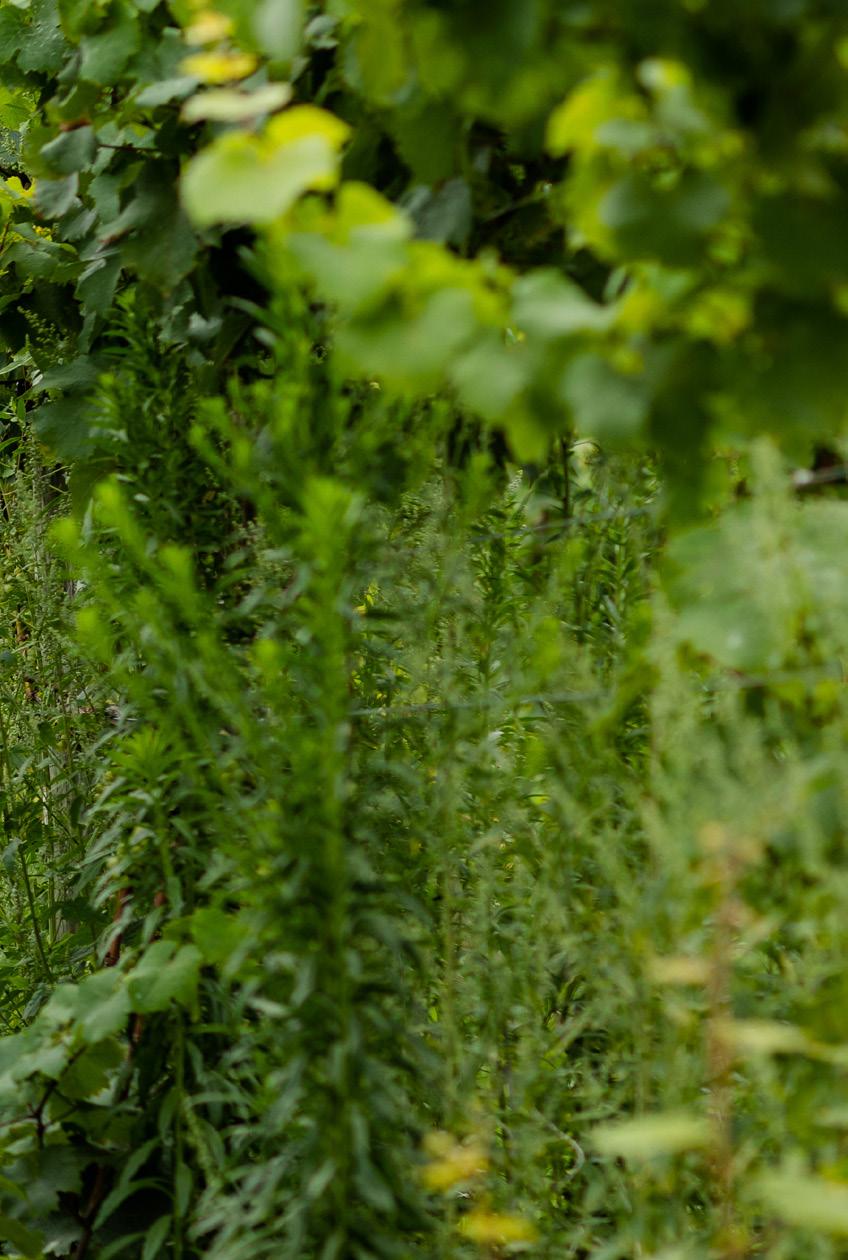
Hail to the hybrids
Most of the hybrids used in New York today were developed by French horticulturalists from 1880 to 1950. The category is often referred to as French-American hybrids, although many popular varieties, such as Frontenac, Marquette and Traminette, are the result of programmes from the University of Minnesota and Cornell.
Embracing sustainability
Building on the progress made over the past half century, The New York Wine & Grape Foundation has launched the New York Sustainable Winegrowing Program, with a mission to advance environmental, social and economic sustainability standards, third-party certification, grower education and stakeholder engagement.
Sustainability can be challenging to explain, as its principles are so wideranging, but from the growers’ point of view, it can be summed up as being about family. As stewards of the land, they want to protect and preserve for the generations to come. The overwhelming majority of New York State’s producers are small, family-owned and run businesses, and are able to maintain best practices more effectively than mass-market producers.
Number crunching
The New York wine industry generates over US$6.65bn in economic benefits to New York State on an annual basis. It attracts 4.71 million tourist visits a year, which translates to US$1.8bn in tourist spending.
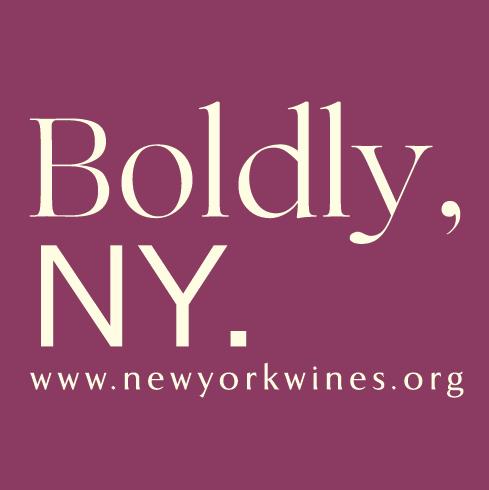
Although most of the state’s 444 wineries are small, New York is the third largest wine-producing state in the US, and in 2021 it accounted for over 3.5% of the nation’s production.
Being bold
The US government has no rules when it comes to which grapes can be planted where, how they are planted, or the bottle type used. However, as in most countries, there are immutable regulations concerning labelling.

During prohibition a few wineries survived by taking advantage of loopholes in the law. In 1927 the US Federal Government passed changes including that all sparkling wine could be sold for sacramental purposes. Some wineries sold blocks of dried grapes with the warning, or, in this case, the explicit instructions: “Do not soak in water and store in a dark place for three weeks, or it may produce alcohol.”
Sharing is caring
New York State’s agricultural history has largely been built on grape production rather than a focus on viticulture, but over the past 50 years producers have been working to change that. The region’s winemakers have a reputation for collegiality and sharing knowledge with peers: their restless curiosity has put them in the vanguard of viticultural standards. Leading producers take a more holistic and hands-on approach to vineyard management, reducing reliance on pesticides and herbicides, and focusing on the importance of soil health using nonchemical methods.
From an agri-business point of view, the modest upward trend in the prices of New York wines has enabled owners to reinvest in equipment, plant additional vineyards and to retain quality and character across the vintages.

THE WINE MERCHANT july 2023 59
See overleaf for a directory of UK importers of New York State wines
CHANNING DAUGHTERS WINERY
Region: Long Island channingdaughters.com
Channing Daughters grows two dozen varieties across 11 hectares of vineyards. Planted between 1982 and 2007, the vineyards reflect the evolution from Walter Channing’s initial Burgundian experiments to the steady introduction of Italian cultivars. Joining Walter are Larry Perrine, the legendary viticulture and oenology consultant, and head winemaker Christopher Tracy.
Imported by Wanderlust Wine
FORGE CELLARS
Region: Finger Lakes forgecellars.com
Forge Cellars is a small, artisanal producer, co-owned by French winemaker Louis Barruol of Château de Saint Cosme in the Rhône, whose search for a new wine adventure brought him to the US. The unique, cool climate terroir he found there was irresistible and so Louis and two like-minded friends – Rick Rainey and Justin Boyette –decided to make the best Riesling and Pinot Noir possible.
Imported by Bibendum
HERMANN J WIEMER VINEYARDS
Region: Finger Lakes wiemer.com
Founded in 1979 by Hermann Wiemer, the Wiemer estate spans 90 acres of prime vineyard sites on the western slopes of Seneca Lake. Hermann’s family had been making wine in the Mosel Valley for more than 300 years when he arrived in the Finger Lakes in the 1960s and identified the terroir as being ideal for producing great wines. He quickly saw that the region should move away from indigenous varietals, and that it could be fertile ground for Riesling.
Imported by Wanderlust Wine
estate vineyards. Jesse Alexander is the winemaker.
Imported by Daniel Lambert Wines
OSMOTE
Region: Finger Lakes osmotewine.com
Ben Riccardi founded Osmote in 2014 and brings the sensibilities of a young gun who has worked in Sonoma, New Zealand and France along with Big Apple attitude from time honing his skills at Manhattan’s City Winery. Using fruit from both Seneca and Cayuga Lakes, Riccardi makes low-intervention, wild-yeast wines that revel in freshness and lower alcohol.
Imported by WoodWinters
RED NEWT WINE CELLARS
Region: Finger Lakes rednewt.com
Red Newt Cellars was founded in 1998 by David and Debra Whiting. Wine production was started in the 1998 vintage with a mere 1,200 cases of Chardonnay, Riesling, Vidal, Cayuga, Cabernet Franc, Cabernet Sauvignon and Merlot. The first white wines were released at the grand opening of the winery and restaurant in July 1999.
Imported by The Wine Treasury
DR KONSTANTIN FRANK WINERY
Region: Finger Lakes drfrankwines.com
In 1957 Dr Konstantin Frank planted the first vinifera vines in the eastern United States, thereby igniting the Vinifera Revolution – the movement that changed the course of winemaking in New York. Four generations strong, the family continues to build on this legacy and have recently added Gruner Veltliner to the Riesling, Chardonnay and Pinot Noir varieties they work with.
Imported by Matthew Clark and Whelehans Wines
HOSMER WINERY
Region: Finger Lakes hosmerwinery.com


The first five acres of vines planted by Cameron and Maren Hosmer in 1973 are now surrounded by 70 acres of grapes that thrive on the Hosmer farm. After 15 years of selling their grapes, they founded Hosmer Winery in 1985, which now produces 20,000 gallons of wine per year. Cameron works closely with winemaker Julia Hoyle to produce consistent quality wines in the European tradition.



Imported by Vineyard Cellars
LAMOREAUX LANDING WINE CELLARS
Region: Finger Lakes lamoreauxwine.com
Mark Wagner is the third generation of his family to farm grapes on the shores of Seneca Lake. He took over his family farm in 1978 and has since increased vineyard holdings from 40 to 112 acres. Wagner opened Lamoreaux Landing in 1992, where he applies his experience to the task of cultivating premium European varieties from only
THE WINE MERCHANT july 2023 60 DIRECTORY OF NEW YORK WINERIES
Feature sponsored by New York Wines www.newyorkwines.org www.newyorkwines.co.uk
Photos by Rima Brindamour
The absence of Physical Lunch, wrote Stephen Hawking, in no way negates the possibility of Infinite Lunches, in the sense of regimes from which lunch can’t escape to infinity. It doesn’t make much sense to me, because I am not a Scientist – but I get the bit about Lunches.

I am not a Scientist but my Big Brother is a Scientist. He’s been in the hospital for six months, my Big Science Brother, and has been, in the words of our late father, Not Particularly Well. Repeatedly. It’s meant I’ve had a lot of time to talk to him, and to his kids, to revel again in the hatred of WH Smith with my niece, to see that comforting routine of hospital wards: bloods and menus and the tea trolley and fragmin injections, the weeks passing and the routine of the week and the changes each week and the solidity of the drive, the same road, gear changes, and the land and light changing from darkest winter to brightest summer.
There was a toilet book kicking about at some point (what a terrible idea, my haemorrhoids say) where (all hail!) Douglas Adams covered some major gaps in the lexicon. Apparently this was not
31. HAWTHORN AND HOSPITAL FOOD
Phoebe Weller of Valhalla’s Goat in Glasgow finds that a relationship can blossom, given a little routine and repetition
come out funny again.
When I was young and making love was just for fun because I went to school with only bulimic girls in cloaks, I directed a play called A World Without Men which itself was not fun, but it did have an allfemale cast, saving us all from the Fat Noisy One pretending to be a man again, and anyway, I was directing the show. The USP of the show was that every time anyone said the word “man” or “men” we would play a three-second clip of spooky suspenseful music we had grabbed from the Austin Powers soundtrack. The first 15 times this was funny, the next 30 or so provoked active hostility and the last 20 … somebody actually spontaneously combusted due to hilarity.
if DA had written the word, surely it was Right, right? But then, my sense of humour has occasionally been questioned, leaning as it does on the Pun, the Whimsy and the Repetition.
There must be a word for something being initially funny and then moving into a lengthy quite annoying phase and out the other side to the funnier than anything has ever been ever phase, which is true
Last week, on the drive back from the hospital with my non-binary niecenotniece I was pointing out the hawthorn which at that stage in the yearly game were quite frankly blossoming fucking everywhere. Hawthorn, I said, Hawthorn, hawthorn hawthorn, hawthorn hawthorn hawthorn hawthorn hawthorn. Hawthorn hawthorn. Hawthorn hawthorn hawthorn.

Hawthorn hawthorn hawthorn, hawthorn, hawthorn hawthorn.
Hawthorn, I continued, hawthorn hawthorn hawthorn hawthorn. Hawthorn. Hawthorn, hawthorn, hawthorn.
“I’m hungry.” Quiet, I said, I’m showing you the hawthorn. Hawthorn hawthorn hawthorn hawthorn hawthorn hawthorn. Hawthorn, hawthorn, hawthorn. Hawthorn hawthorn hawthorn hawthorn. Hawthorn hawthorn hawthorn. On the welcome arrival of a fruit farm I relinquished my hawthorn attack, for there were no hawthorns. “The thing about you, Niecenotniece, is that you understand the repetition thing. Today I christen that thing Fevwe, an excellent term for it I think you’ll agree. Now, do you think we can get a late lunch somewhere?” They nodded, which was nice, and pointed out several hawthorns I had missed.
THE WINE MERCHANT march 2023 61 The Vindependents tasting takes place on March 21
THE WINE MERCHANT july 2023 61
gonzalez byass uk
Woodcock Hill
Coopers Green Lane
01707 274790


info@gonzalezbyassuk.com

www.gonzalezbyassuk.com

@gonzalezbyassuk
orders@walkerwodehousewines.com
www.walkerwodehousewines.com

@WalkerWodehouse


Spotlight on: Vietti
Vietti are considered to be one of the very best producers in Piedmont. Their wines are highly sought-after, with beautifully designed labels as well as wonderful wine.
Named Vinous 2022 Winery of the Year, it was founded at the end of the 1800s when Carlo Vietti created the winery in the heart of the Langhe, on the highest point of the medieval village of Castiglione Falletto. They were one of the first Piedmont producers to select and vinify grapes from single vineyards, which is now commonplace, with every Barolo and Barbaresco producer now offering single vineyard wines.
In 1970, Vietti decided to support to some local artists and have selected labels turned into artworks. The most recent artist series label rcame from American realist Janet Fish on Vietti’s 1990 Barolo “Villero”.
The whole collection of artist labels was shown at the Museum of Modern Art of New York. Today, Vietti has some of the most prestigious vineyards in the Barolo and Barbaresco area and their wines are some of the most awarded in the region, particularly their Cru Barolos, which are renowned around the world.
For more information on Vietti, please contact your account manager.

The Dutch Barn
St Albans AL4 9HJ
SUPPLIER BULLETIN walker & Wodehouse
Regents Park Road
NW1 8UR
109a
London
1665
0207 449
THE WINE MERCHANT july 2023 62
Domaine Michel Redde: Pioneers in single terroir Pouilly-Fumé

Domaine Michel Redde et Fils is one of Pouilly-Fumé’s most highly regarded growers. Its range showcases the principal Pouilly-Fumé terroirs.
Multi-Terroir Wines



Petit F… made from the domaine’s younger vines, and La Moynerie, the estate’s flagship blend, are made from vineyards in four villages. La Moynerie expresses depth and complexity while Petit F… retains the primary aromas and freshness of Sauvignon Blanc.
In 1973, Michel Redde was the first in Pouilly-Fumé and Sancerre to create a special cuvée. Its name is Majorum, from recta facere more Majorum, meaning to do the best in the tradition of the elders. The wine is made from a selection of the oldest vines on Kimeridgian marl and flint clay soils.
Single Terroir Wines


Les Cornets comes from Pouilly-Sur-Loire grown on Kimmeridgian marl with small oyster shells; Les Champs de Billons from Tracy-sur-Loire on Portlandian limestone and Les Bois de Saint Andelain from Saint Adelain on Cretaceous flint. Barre a Mine is a unique site, inside a former flint quarry. It has very large Cretaceous flint rocks. The cuvée name refers to the crowbars that were needed to plant each vine.
Les Toupées is the newest single-vineyard release. It comes from of Saint-Martin-surNohain from vineyards on Oxfordian limestone, called Caillottes locally.
For more about these wines please contact your Louis Latour Agencies account manager.
hallgarten wines

@hnwines
Mulberry House Parkland Square 750 Capability Green Luton LU1 3LU 01582 722 538
www.hnwines.co.uk THE WINE MERCHANT july 2023 63
sales@hnwines.co.uk
Denman Street
W1D 7HJ
409 7276
www.louislatour.co.uk
LOUIS LATOUR AGENCIES 12-14
London
0207
enquiries@louislatour.co.uk
GCF EXCLUSIVE
1, rue Division Leclerc, 67290 Petersbach, France
chris.davies@lgcf.fr
07789 008540
@FamilleHelfrich

@gcf_exclusive_uk



vindependents
Jessica Hutchinson
jessica@vindependents.co.uk
www.vindependents.co.uk


@vindependents

SUPPLIER BULLETIN THE WINE MERCHANT july 2023 64
They’re all smiles to your face …
marta vine
7 Vicarage Road Southwell NG25 0NN
01636 816947
sales@martavine.co.uk


MartaVineLtd
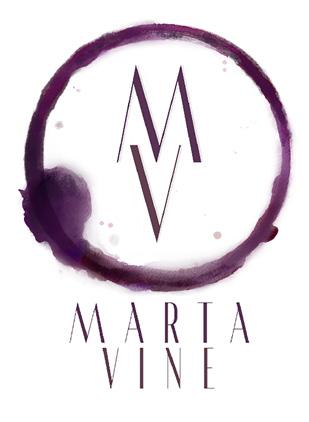

hatch mansfield
New Bank House
1 Brockenhurst Road Ascot
Berkshire SL5 9DL
01344 871800
info@hatch.co.uk
www.hatchmansfield.com
@hatchmansfield

THE WINE MERCHANT june 2022 65
MERCHANT july
jeroboams trade


7-9 Elliott's Place London N1 8HX

020 7288 8888
sales@jeroboamstrade.co.uk www.jeroboamstrade.co.uk
@jeroboamstrade
vintner systems


The computer system for drinks trade wholesalers and importers
16 Station Road Chesham HP5 1DH
sales@vintner.co.uk www.vintner.co.uk

SUPPLIER BULLETIN THE WINE MERCHANT july 2023 66
BERKMANN wine cellars

104d St John Street
London EC1M 4EH
020 7609 4711
info@berkmann.co.uk
www.berkmann.co.uk
@berkmannwine

@berkmann_wine
buckingham schenk
Unit 5, The E Centre
Easthampstead Road
Bracknell RG12 1NF
01753 521336
info@buckingham-schenk.co.uk





www.buckingham-schenk.co.uk
@BuckSchenk
@buckinghamschenk
Morande Terroir Cinsault/Pais 2021
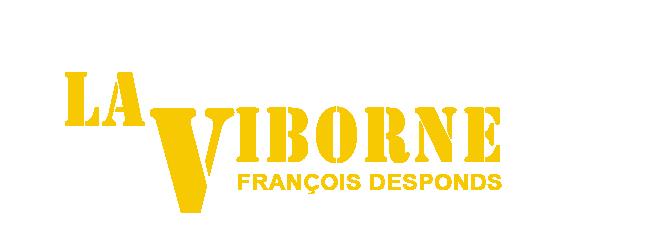
RRP: £12.99
Morandé was founded in 1996 by Pablo Morandé, and found immediate recognition both domestically and abroad. Morandé are true pioneers – they were the first family to develop the Casablanca DO, recognising the fantastic potential of this cool-climate wine region.
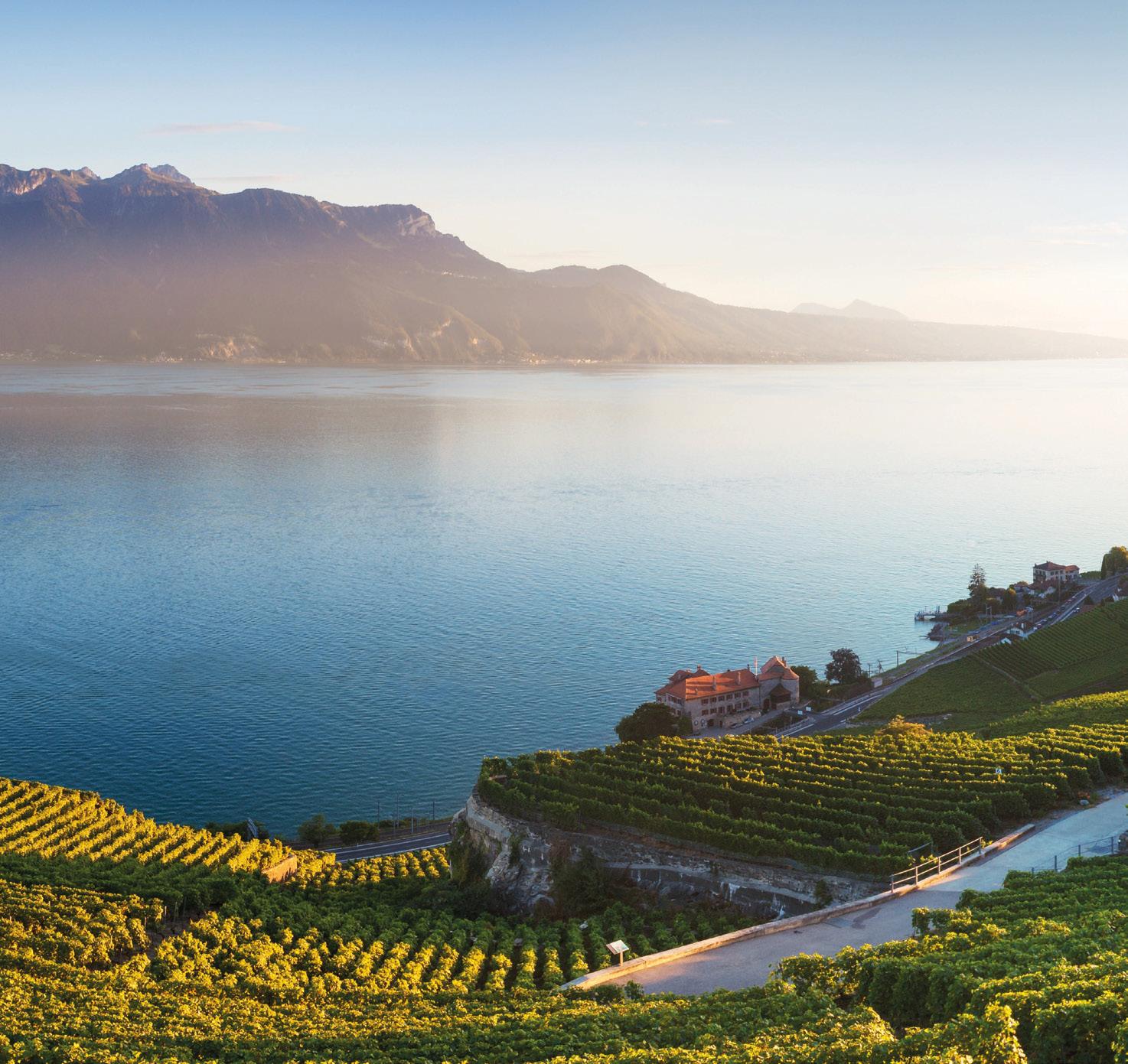
The Cinsault vines are bush trained, whilst the Pais comes from 60-year-old high head-trained vines. This is an exuberant and youthful wine, full of wild strawberry and raspberry fruit. Soft and light, but by no means frivolous, it has enough spicy complexity and earthy intrigue to elevate it beyond simple quaffing status.
To find out more and order Morandé Terroir Cinsault/Pais, contact your Berkmann account manager now or email info@berkmann.co.uk.



THE WINE MERCHANT july 2023 67
Fells
Fells House, Station Road
Kings Langley WD4 8LH
01442 870 900
For more details about these wines and other wines from our awardwinning portfolio from some of the world’s leading wine producing families contact:
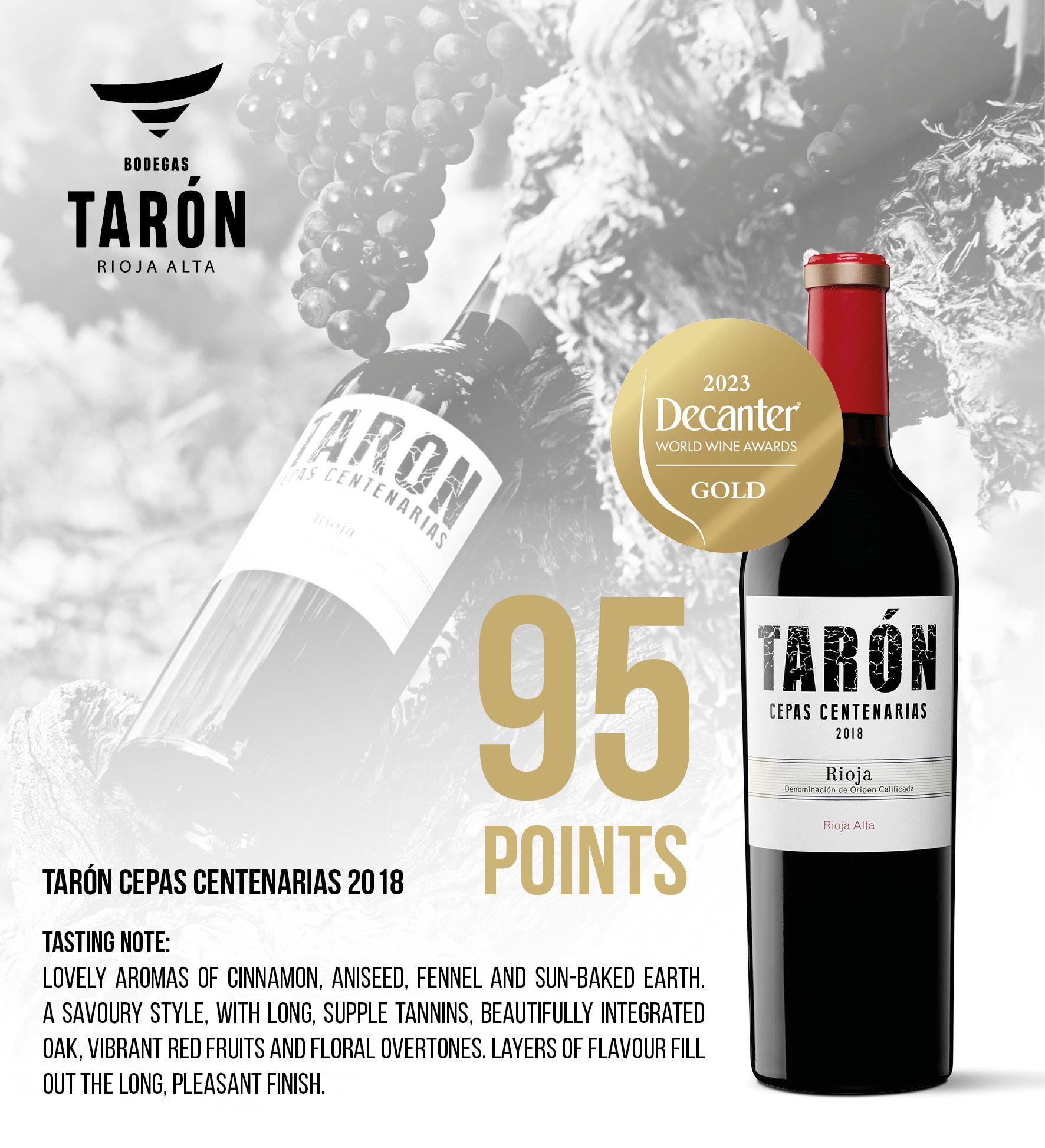

info@fells.co.uk www.fells.co.uk


@FellsWine
je_fells
richmond wine agencies


The Links, Popham Close
Hanworth
Middlesex TW13 6JE
020 8744 5550
info@richmondwineagencies.com
@richmondwineag1

THE WINE MERCHANT july 2023 68 SUPPLIER BULLETIN
mentzendorff
The Woolyard
52 Bermondsey Street
London SE1 3UD
020 7840 3600
info@mentzendorff.co.uk

www.mentzendorff.co.uk

AWIN BARRATT SIEGEL WINE AGENCIES

28 Recreation Ground Road
Stamford
Lincolnshire PE9 1EW 01780 755810
orders@abs.wine
www.abs.wine

@ABSWines
The Great BBQ Summer with Delamain Cognac


Cognac isn’t just for Christmas and this year we’re celebrating by giving you or one of your team the chance to win a day with Delamain Cognac and Mentzendorff at the UK BBQ School.
Exclusively offered to the independent sector, this opportunity will run until 16th August.

To get involved & for further details, please contact your Mentzendorff Account Manager
ABS PORTFOLIO TASTING 2023
Wednesday 6 th September
25
For more details or to register please contact lesley@abs.wine
THE WINE MERCHANT july 2023 69
SAVE THE DATE
Shelton Street,
London WC2H 9LH
liberty wines








020




Jardín de Hormigas – ‘an ecosystem with a vineyard’
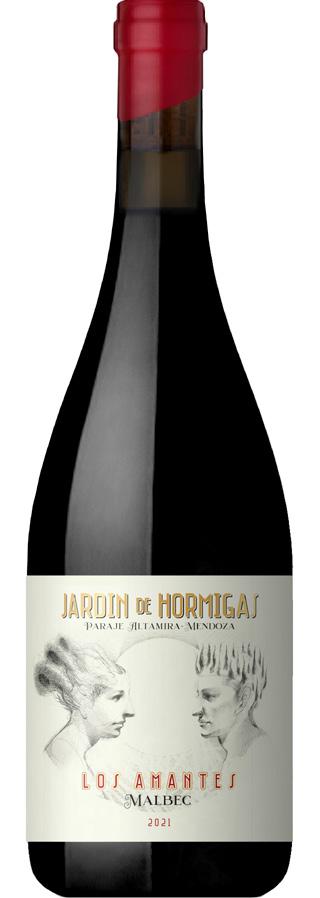




















Malbec specialist Altos Las Hormigas has released the first wines sourced from their Jardín de Hormigas vineyard in Paraje Altamira, Uco Valley. Planted in 2017, Pedro Parra was instrumental in choosing this outstanding site at 1,200 metres above sea level and mapping the different types of limestone soils into 22 individually managed plots of 1.5 hectares each. The native ecosystem has been preserved across the rest of the 55-hectare, certified-organic estate, with biodiversity corridors interspersing the vines. Minimal intervention in the winery, including the use of indigenous yeasts as well as concrete or large, neutral oak for ageing, ensures the wines stay true to their origin. “Less is more,” says co-founder/winemaker Alberto Antonini, “but to do less, you need to know more, and that takes a lot more work.”
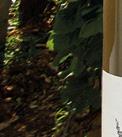







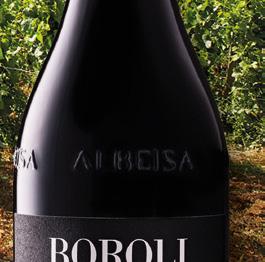




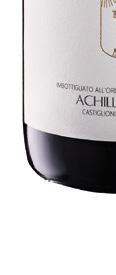



The ‘Los Amantes’ Malbec 2021, recently awarded 100 points by Tim Atkin MW, “comes from a one-hectare plot that viticulturist Pedro Parra justifiably describes as a Grand Cru” and is available now in limited quantities. Aged in untoasted, 3,500-litre French oak foudres for 15 months before very soft filtration and a further 12 months’ ageing in bottle, the wine is elegant, ethereal and expressive, with a strong grip from chalky tannins. The ‘Meteora’ Malbec 2021, sourced from four plots and aged in concrete for 12 months, is complex, unique and surprising, with tension and texture on the palate, and is available from mid-August.

SUPPLIER BULLETIN
7720 5350 order@libertywines.co.uk www.libertywines.co.uk
THE WINE MERCHANT july 2023 70 top selection 23 Cellini Street London SW8 2LF www.topselection.co.uk info@topselection.co.uk Contact: Alastair Moss Telephone: 020 3958 0744 @topselectionwines @tswine Congratulations to our Top 100 winners 4 Top 100 Wines 16 Highly Commended Contact us now for details of our Wine Merchant Magazine Top 100 Special Offers
@liberty_wines
Q&A
Diana Thompson Wine Events Scotland
We Have a Ghost is great. It’s a clever storyline, funny and a film for all ages.
Do you have any sporting loyalties? I tend to veer towards horses although I don’t get the chance to ride much now. One of my daughters is a keen vaulter, which is effectively gymnastics on horseback. Watching her tends to be a sport in itself and quite a workout for my heart!
Who’s your favourite music artist? Without a doubt Sting – he’s such a legend.
Any superstitions?
Always needing to pick up a penny for good luck. When one of my daughters was critically ill, I went into overdrive spotting pennies, most of them in the middle of a busy road. Thankfully, she recovered, so the penny collecting continues.
Who’s your favourite wine critic? It has to be Oz and not just because we recently held Edinburgh Uncorked Wine Fair with him. He’s witty, the ultimate gentleman, down to earth, seems to remember everyone he meets, writes brilliantly, has done so much for the wine industry and, above all, he’s incredibly humble and modest.
What’s your most treasured possession? My family – they’re the best.
Diana launched Wine Events Scotland in 2016, and organises trade and consumer tastings including the new Edinburgh Uncorked Wine Fair. Her 30-year career has included spells at Corney & Barrow and Southcorp Wines. A WSET-certified tutor, she also writes the wine column for The Sunday Post.

What’s the first wine you remember drinking?
My grandfather (who had good taste in wine) got his hands on peach sparkling wine which he thought was great and tried to pass it off as Champagne. Sadly, I think everyone agreed with him too much the first time he brought it out and it just kept appearing and flowing. I think I enjoyed it a couple of times before moving swiftly on.
What job would you be doing if you weren’t in the wine trade?
I was very keen on riding, in particular dressage, believing I’d ride professionally.
However, I doubt I’d have been successful so I’m very glad the wine trade saved me.
How do you relax?
I dream of spending an afternoon in the garden with a glass of something chilled but suspect I’d get bored very quickly. I’d rather be walking in the hills and believe it or not I find cold-water swimming relaxing.
What’s the best book you’ve read recently?
Everyone in the industry ought to read Wine & War by Donald and Petie Kladstrup. It’s a classic, filled with many fascinating and amusing stories about what went on in the wine world during World War II in France. My most recent favourite was The Whalebone Theatre by Joanna Quinn – beautifully written, following a family of strong-minded characters and the paths they take as World War II breaks out.
Give us a Netflix recommendation.
What’s your proudest moment? Being amongst the first females to be admitted to the Livery of The Vintners Company in 2002. My father is a Liveryman and my grandfather was Clerk so it was a very special moment. It’s great to see there are numerous other ladies now.
What’s your biggest regret?
Not investing in some of the classic Penfolds wines in the early 90s.
Who’s your hero?
My dad. Even at 93 he makes us laugh. Nothing gets him down; he constantly thinks of others and is always full of encouragement.
What’s your favourite place in the UK? Almost anywhere in the north west Highlands of Scotland, up in the hills.
What one wish would you like granted? To stop time disappearing so fast. There’s never enough.
THE WINE MERCHANT july 2023 71
“My biggest regret? Not investing in classic early 90s Penfolds wines”




























































 Kasia Smith H Champagne winner H Finley’s Wine Shop & Bar, Hoxton, London
Kasia Smith H Champagne winner H Finley’s Wine Shop & Bar, Hoxton, London





 Imported by Liberty Wines
Imported by Liberty Wines





















































































































































































































